

- This event has passed.
Digital Body Lab no.1 : IMAGE & DATA
Sep 1st 2021 , 08:00 – 17:00
The first Digital Body Lab took place in September 2021
Digital Body Workshop Journal: Day 1 – Abandoning Preconceived Notions
What are our expectations about performance and media? What are the prejudices and stereotypes we carry inside, our points of excitement and our irritations? We spent several hours exploring these questions during the first day of the workshop. It is our attempt to see the digital materials with fresh eyes so we might put them to use in new and unexpected ways.
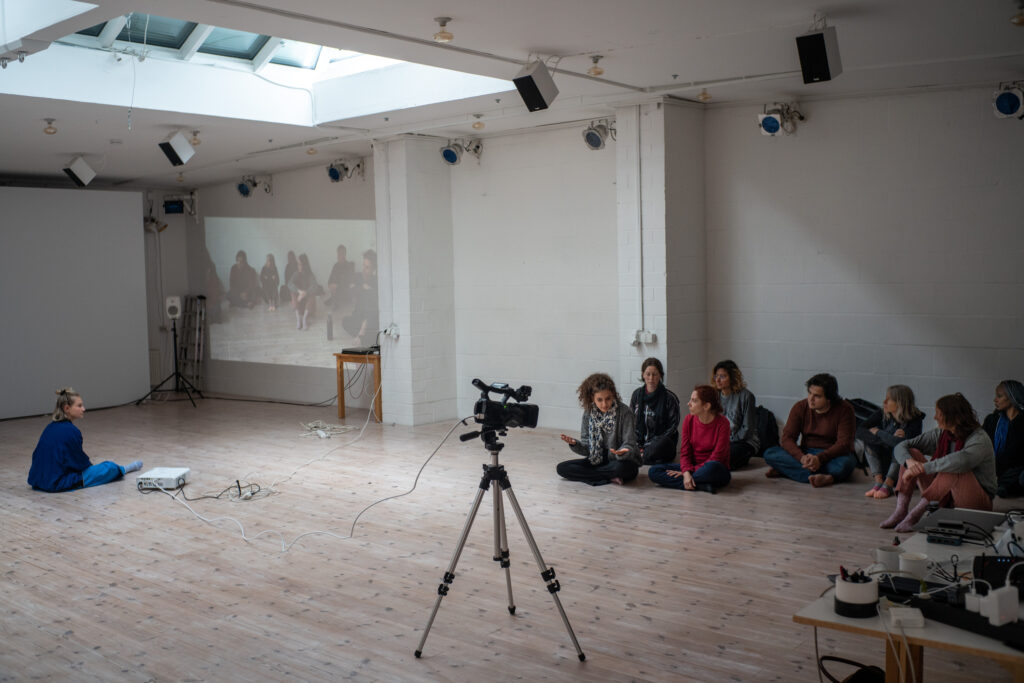
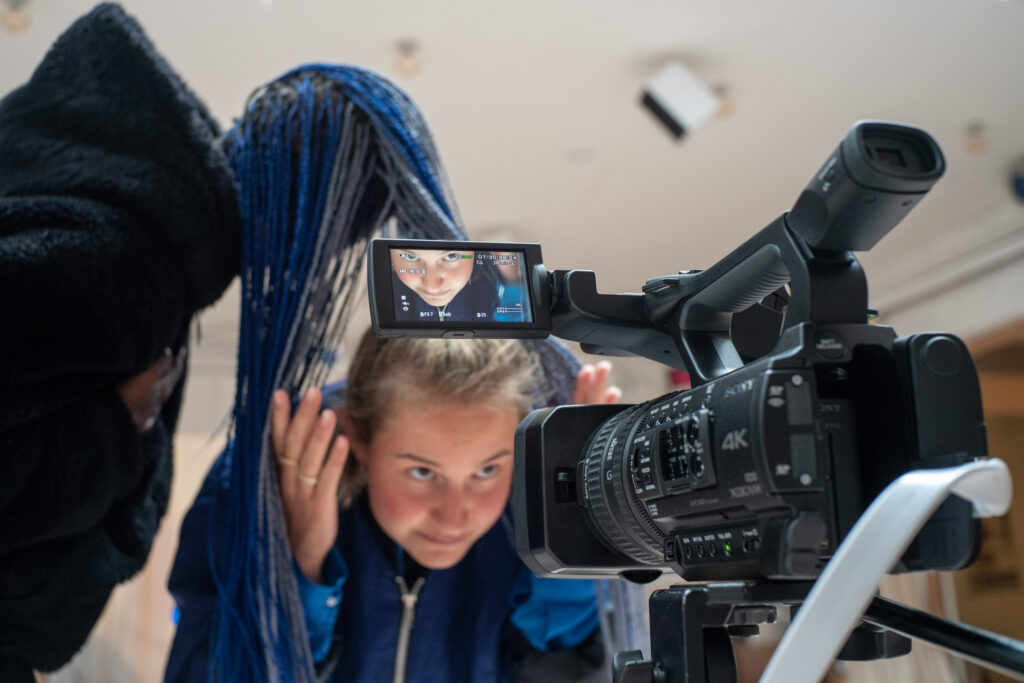

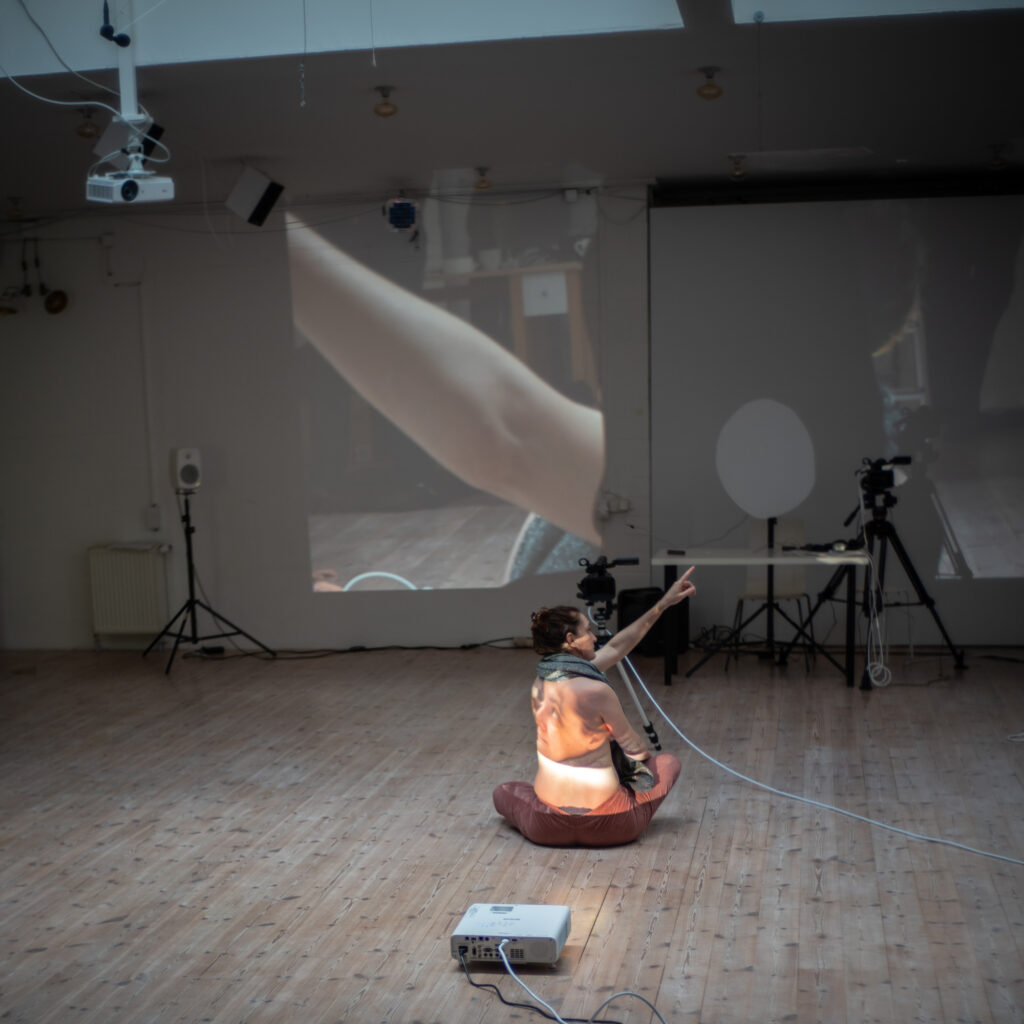
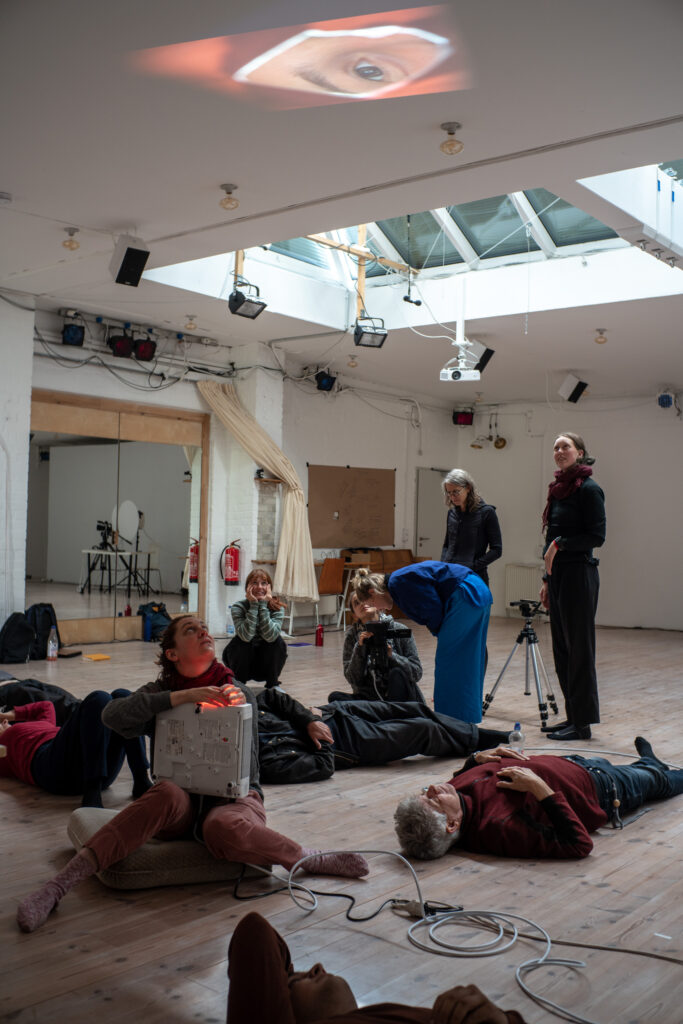
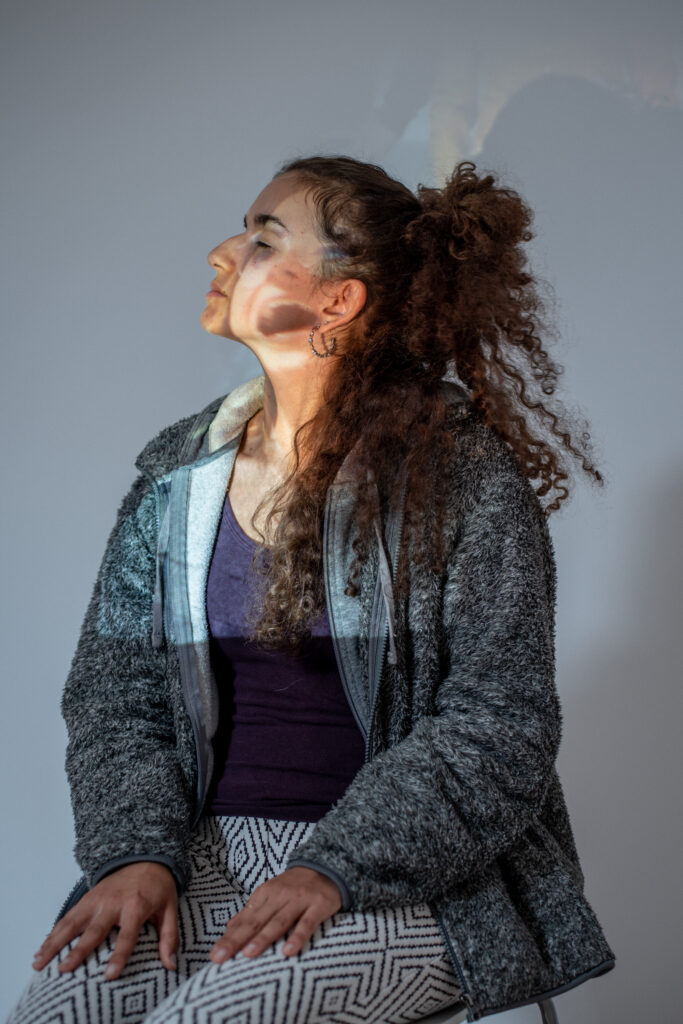
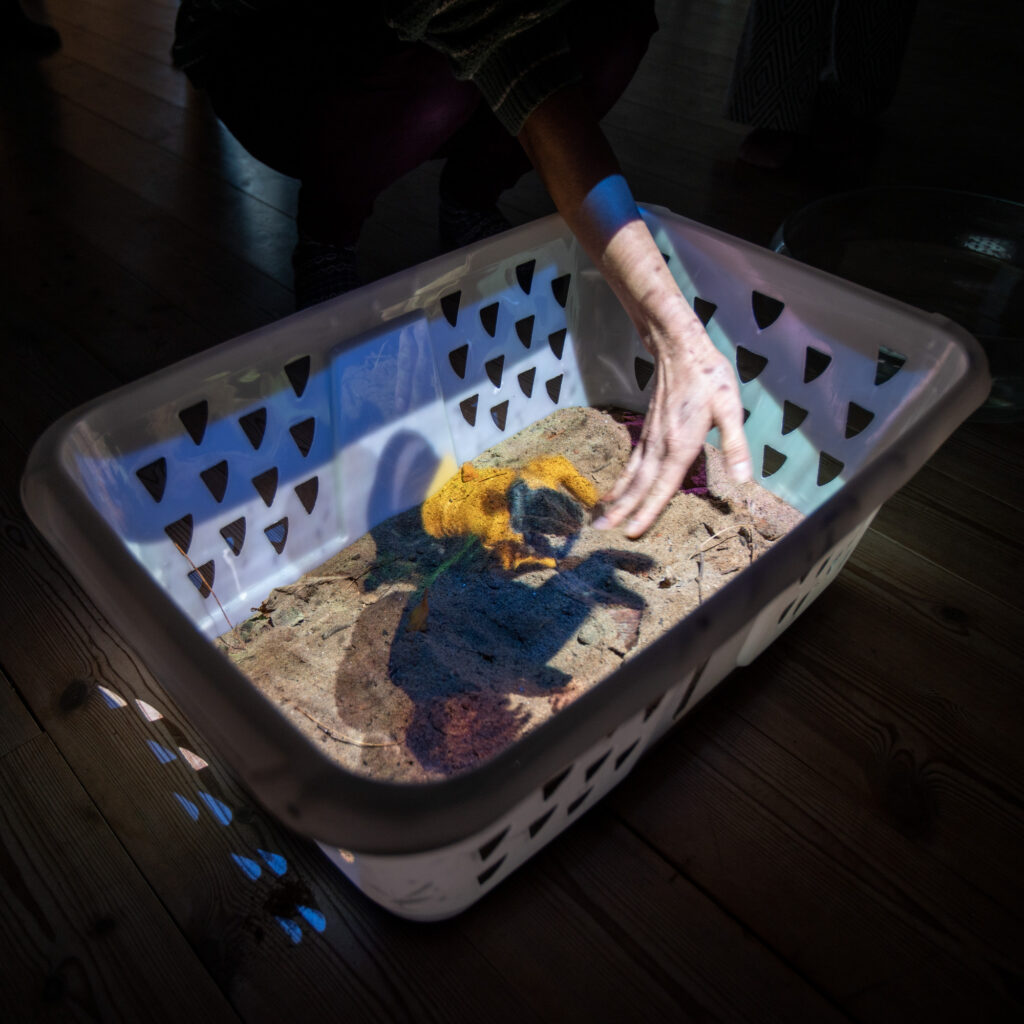
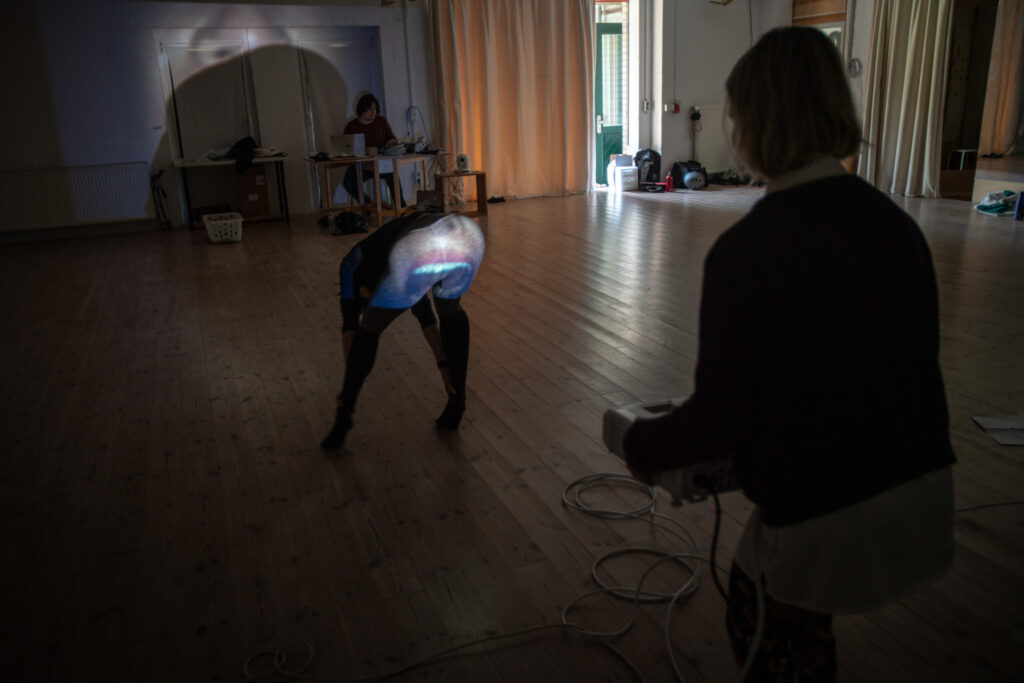
Digital Body Workshop Journal: Days 2 + 3: What is an Image?
The word slips easily from the tongue, but what do we really mean? We dug in to that topic as Benjamin Krieg shared from his vast body of work with groups like She She Pop and others, as Marlon Barrios Solano pushed us inward and outward with several poetic provocations, and Armando Menicacci led us through a rigorous, analytic examination of the structural implications of the word itself.
We responded to all of this by having each participant create and share rapidly improvised scenarios comprised only of a projector connected to a video camera in relation to the performer and audience – each of which led to long, rich discussions of the implications and possible meanings they portrayed.
When thinking about perfomance, what does the word image conjure for you?
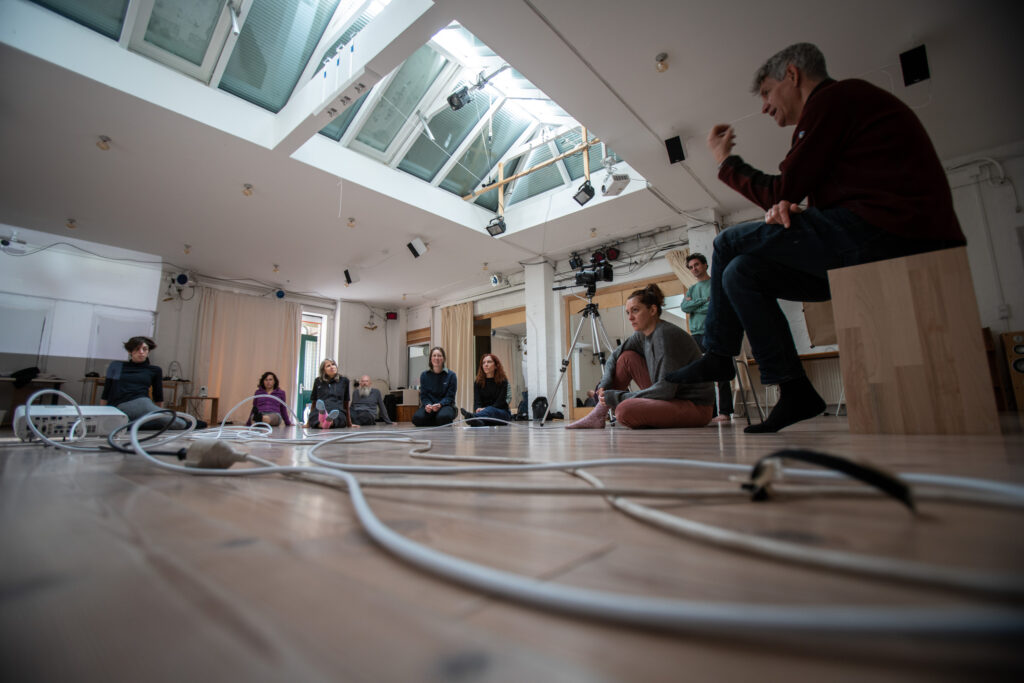
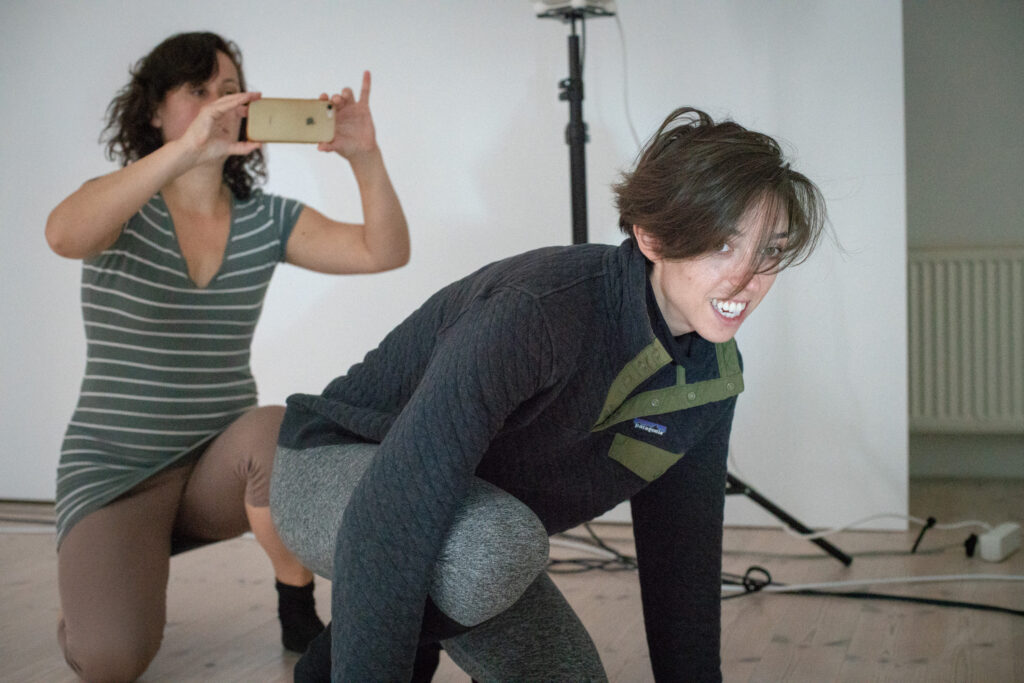
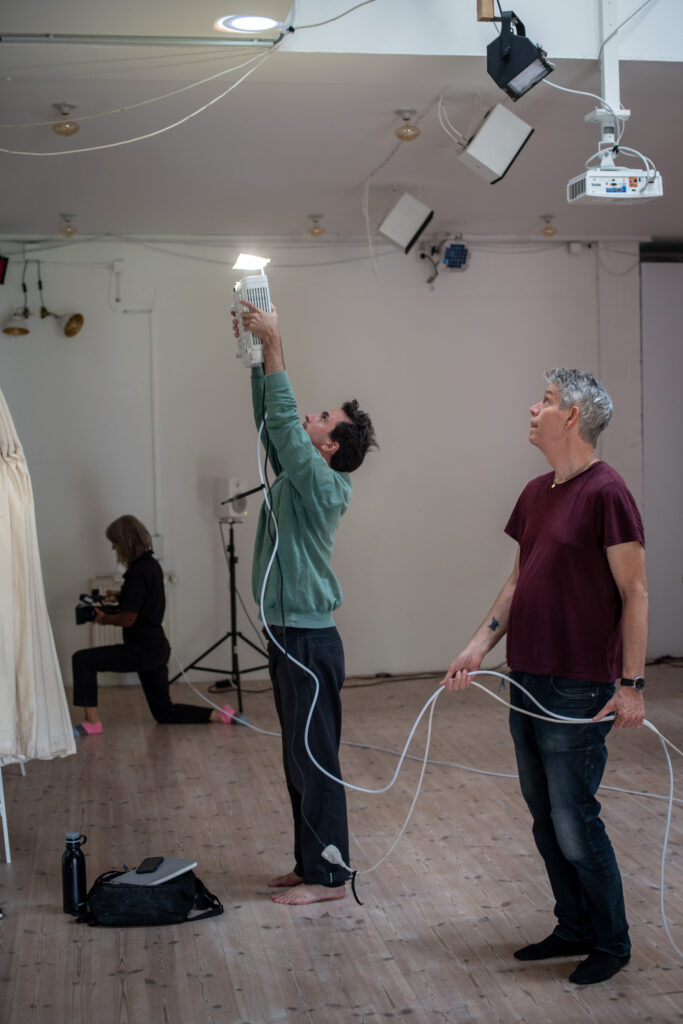
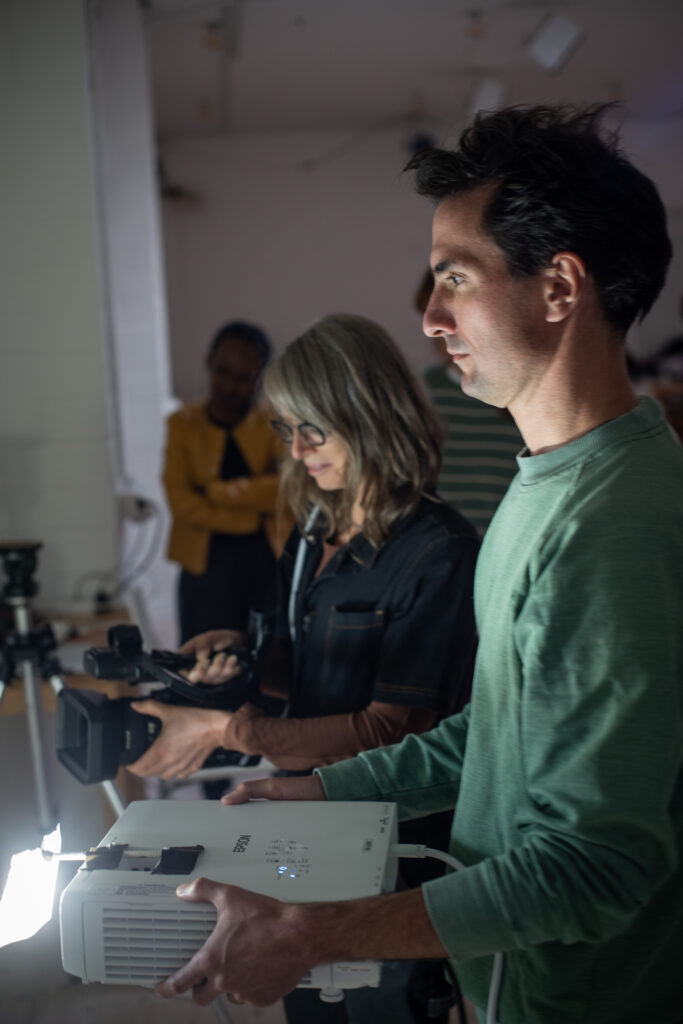
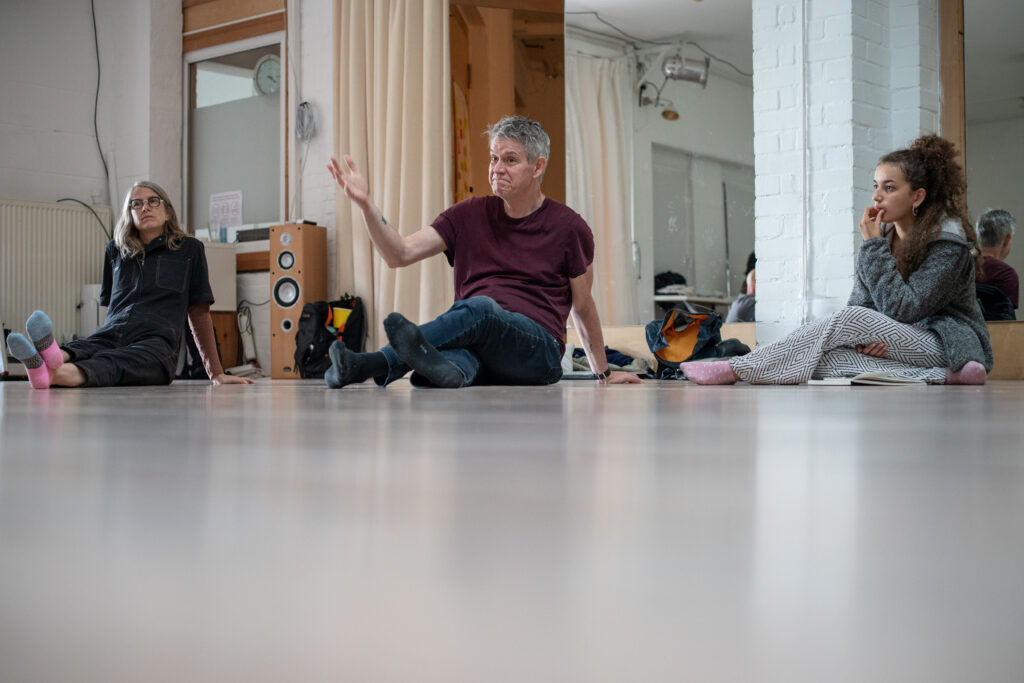
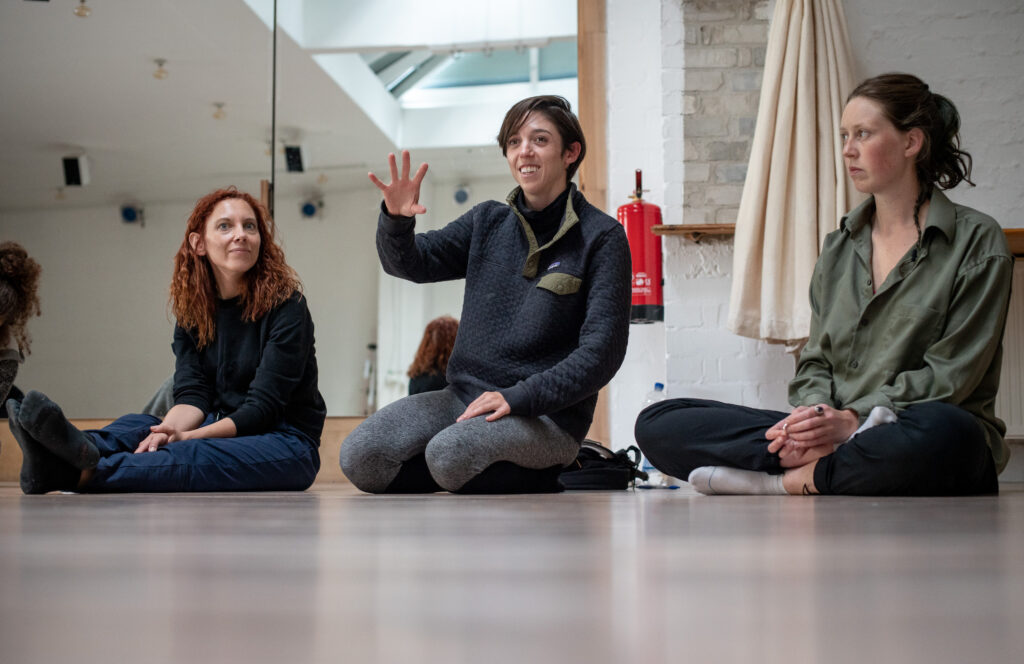
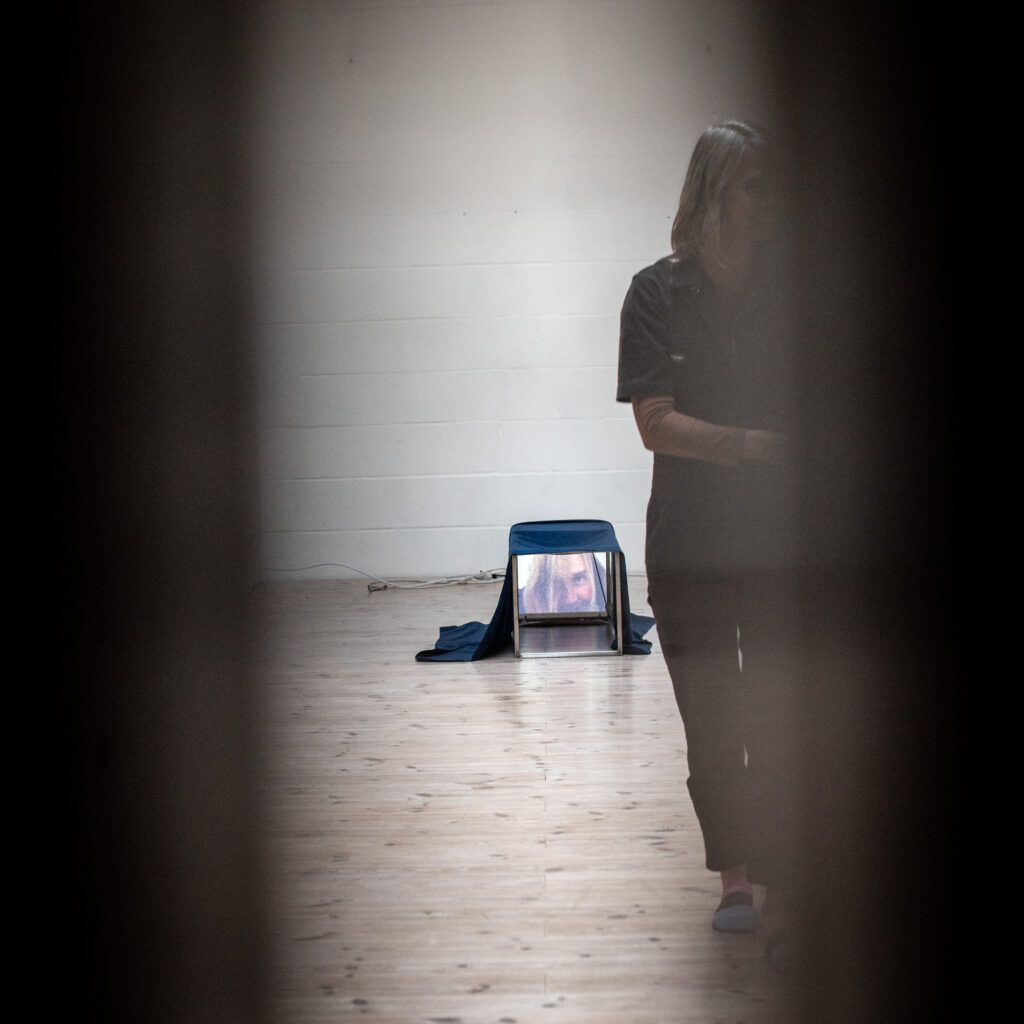
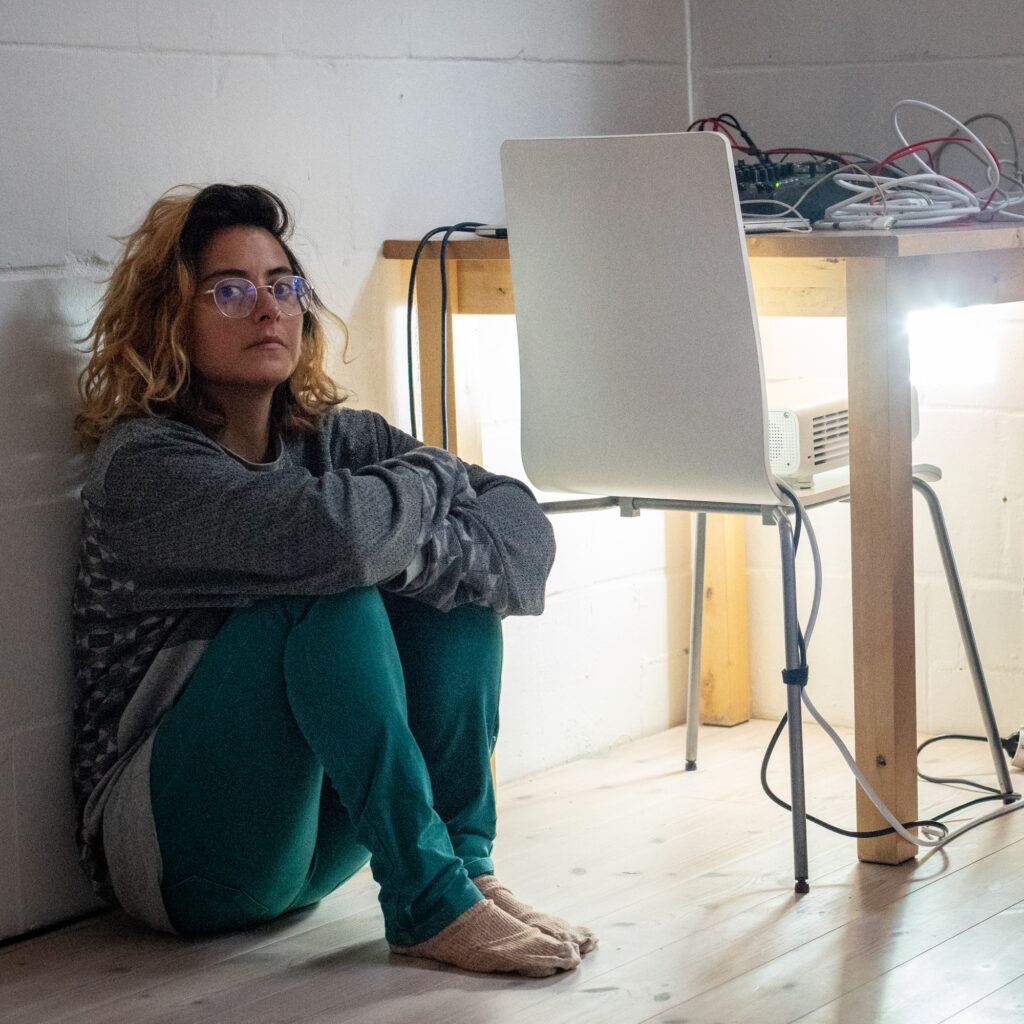
Digital Body Workshop Journal: Days 4 + 5: The Barrier of Technology
After two full days of working only with the technology of a camera, a video projector, and a performer, we opened the door to more complex tools like Isadora itself, but also robotic cameras, green screens, a Rokoko motion capture suit, and more. Immediately upon doing so, the energy in the room changed from one of quiet experimentation and extensive reflection to one of excitement (“Wow!!!”), desire and curiosity (“I want to….” or “How can i…?”) and at least some frustration (“Why can’t I get this working?”). These tools and devices can offer fresh and compelling new modes of expression, but their complexity can also impede a free-flowing artistic process, leaving us with the question: what does media/technology give us, but what also does it take away?
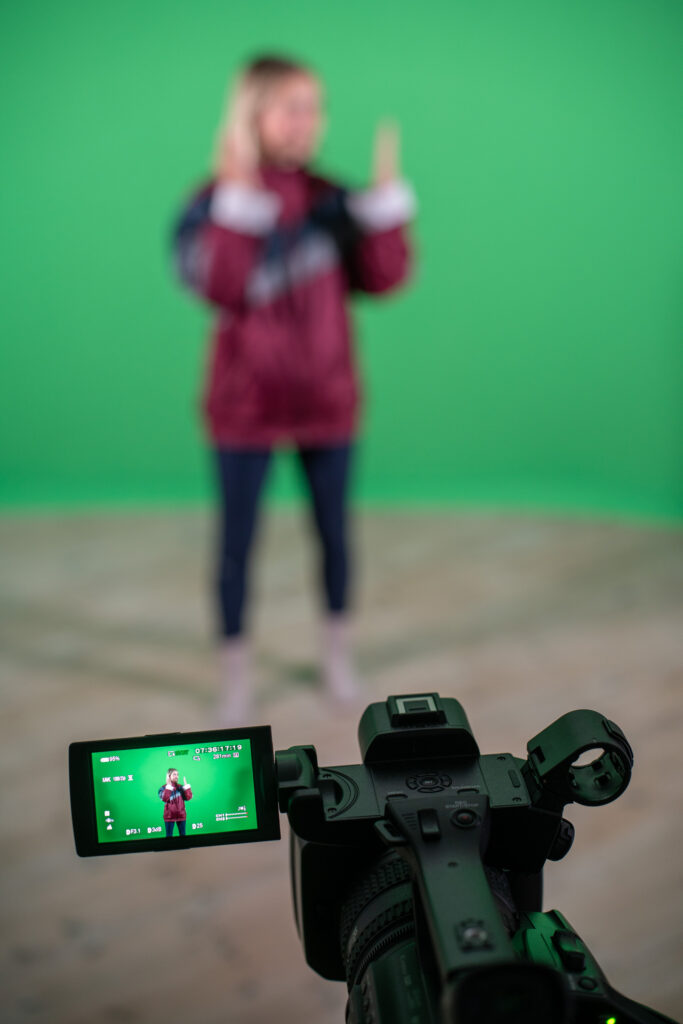
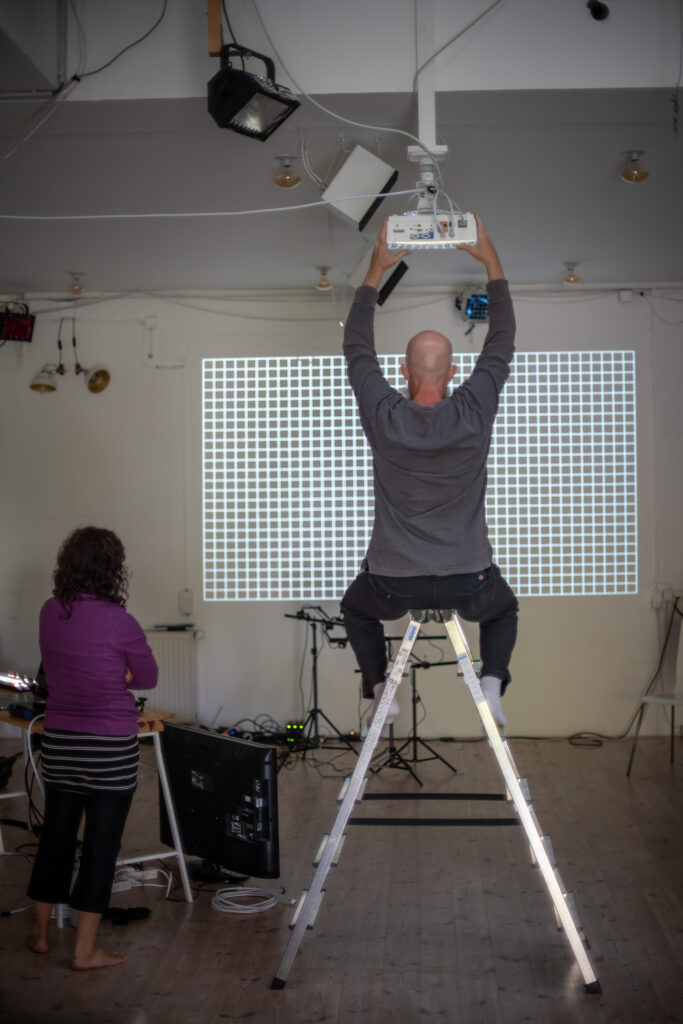

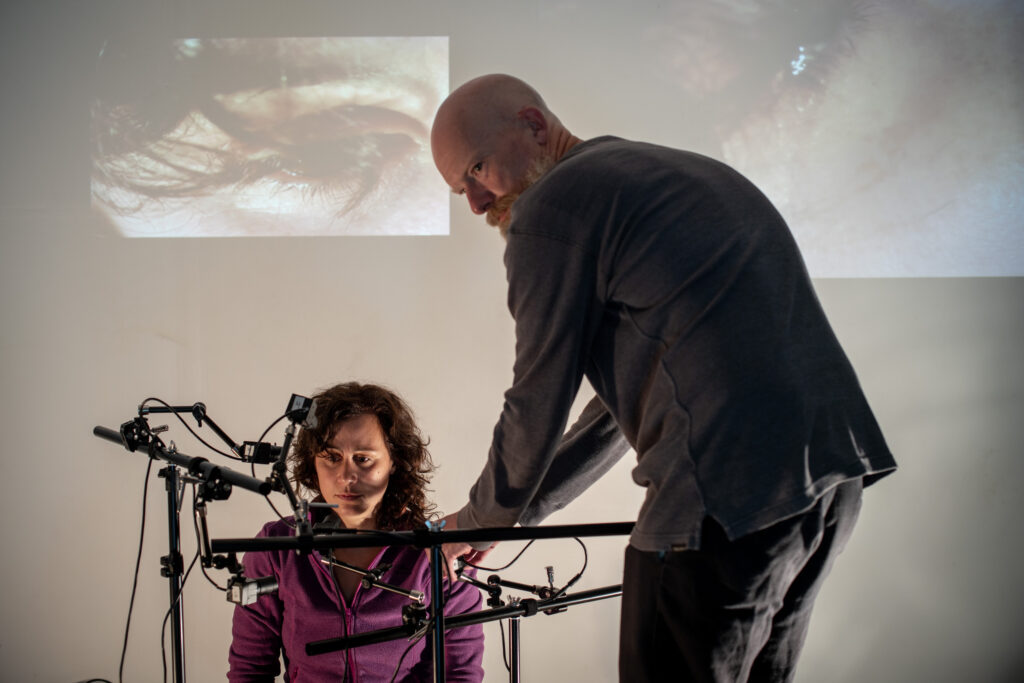
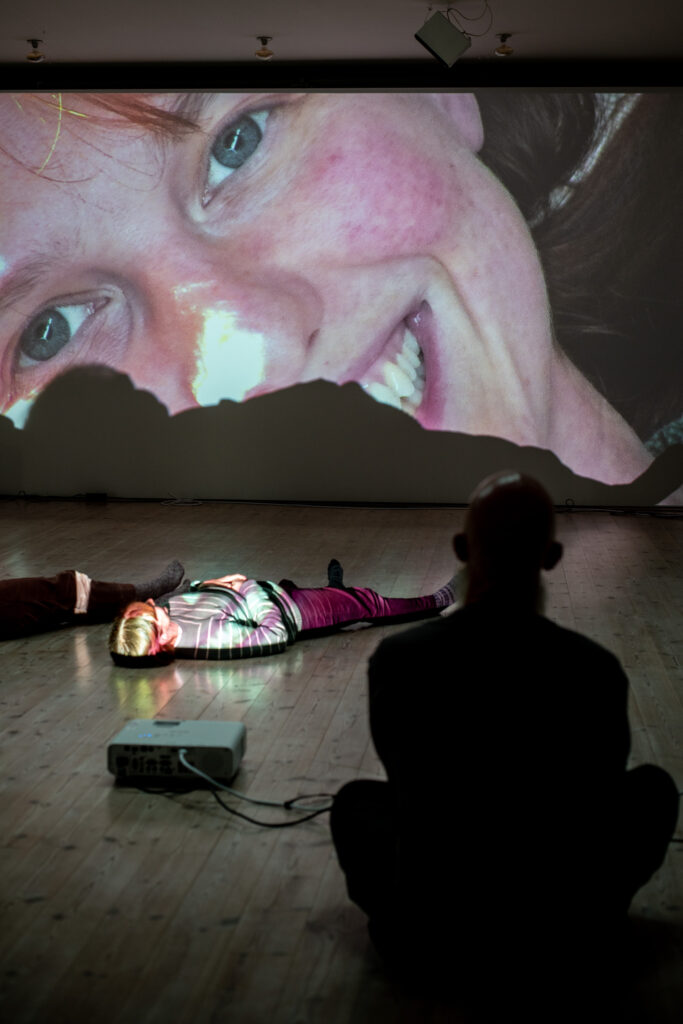
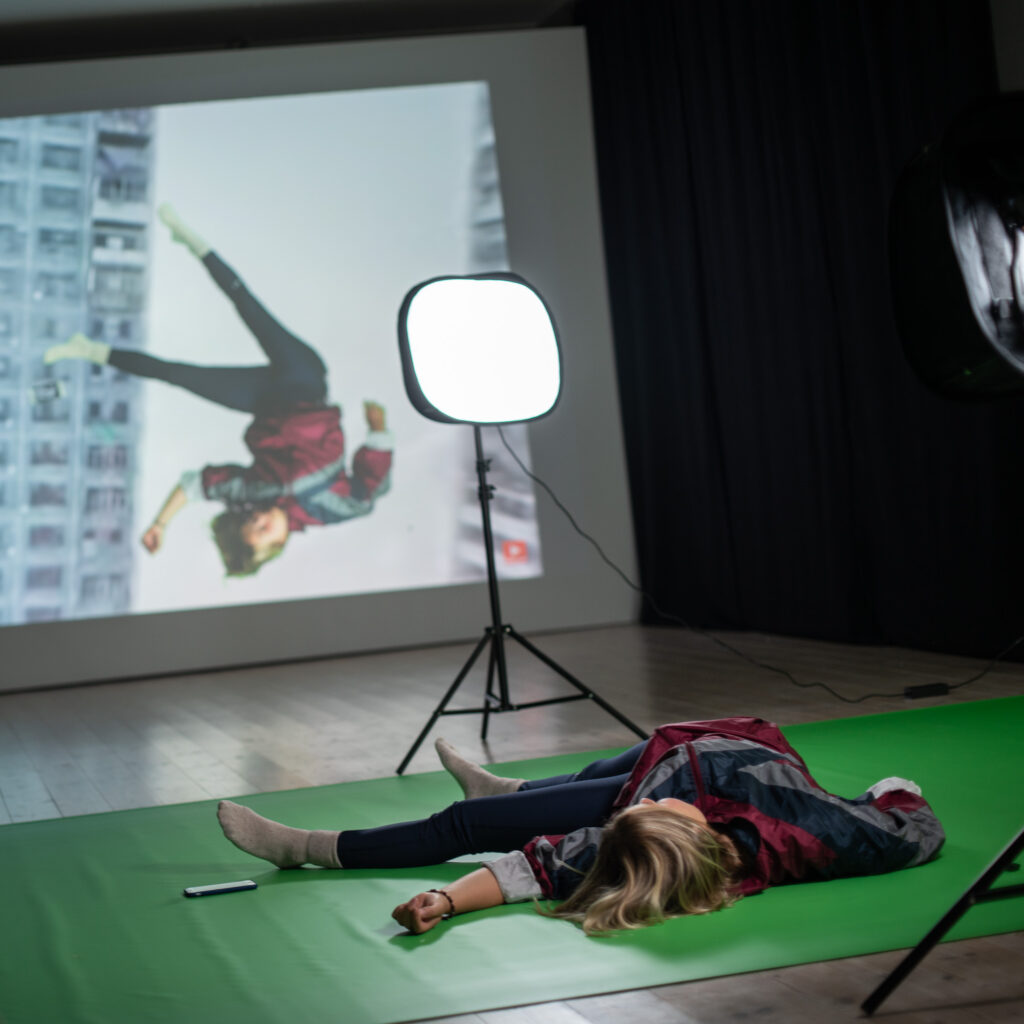
Digital Body Workshop Journal, Week 1 – “What is it?”
For the last six days, we have attempted to (re)encounter the image: to imagine it, to read it, to wrangle the hardware and software required to record and render it. We did this within the frame of our overarching goal: to abandon preconceived notions and see these materials in a new way. As we start week 2, I ask myself, “how did we do?”
In the end, it is impossible to ignore or deny thousands of years of seeing and making images, from cave paintings to virtual reality. It’s in our bones. Yet, we managed to keep ourselves in a constant state of questioning. As Bebe Miller wisely advised us to do last night, we kept stepping back and asking ourself one question, over, and over, and over again.
“What is it?”
For me, embracing that question was the great success of this first week. Now we will see if we can do the same with “data.”
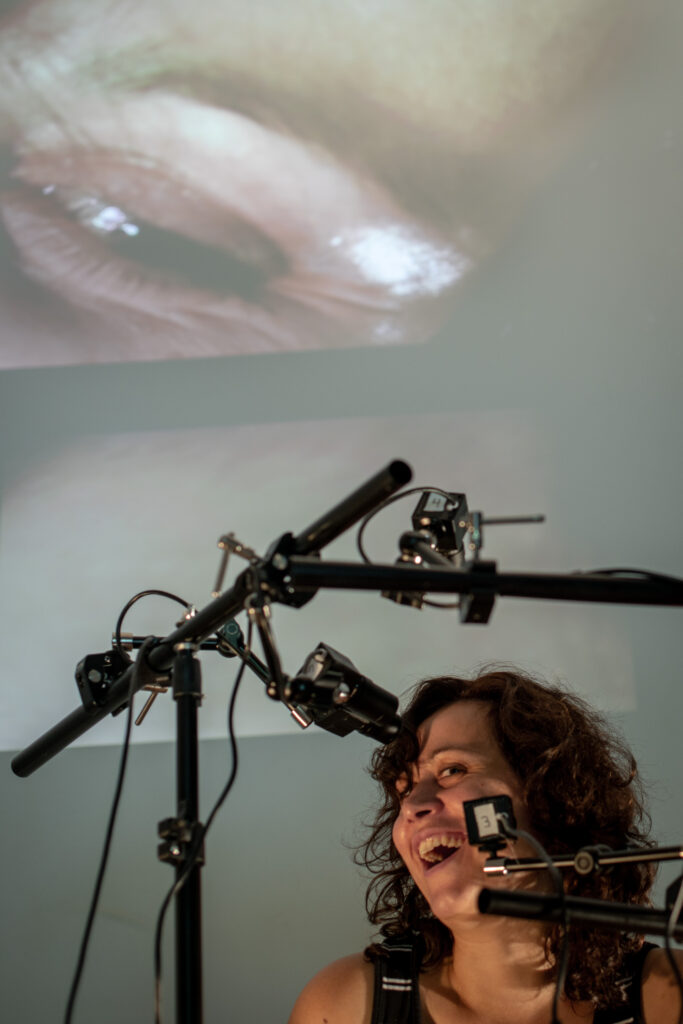
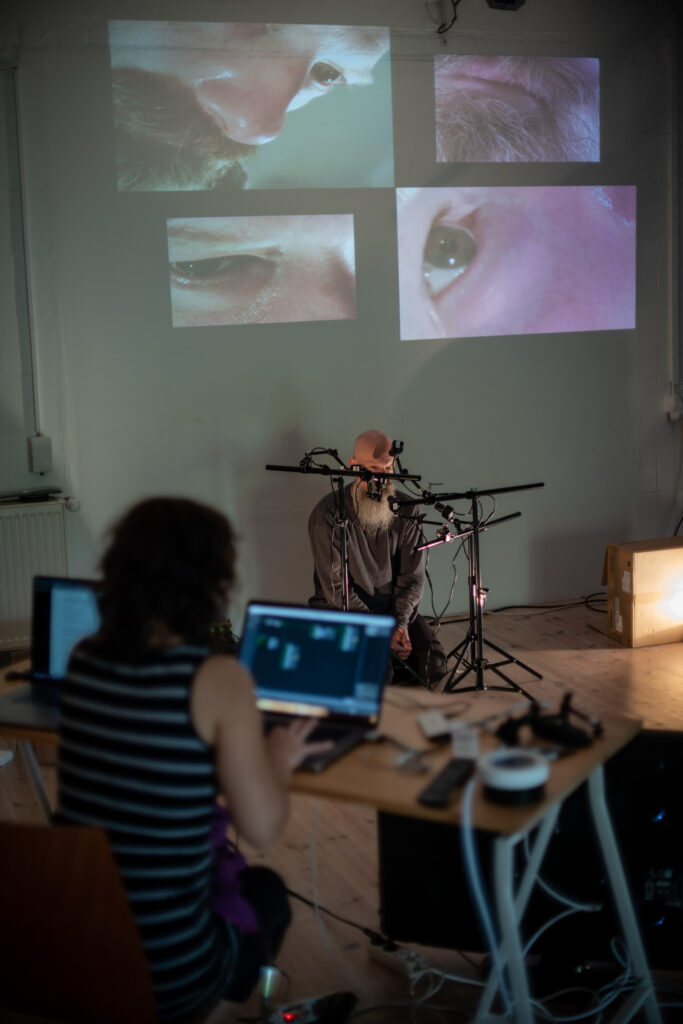
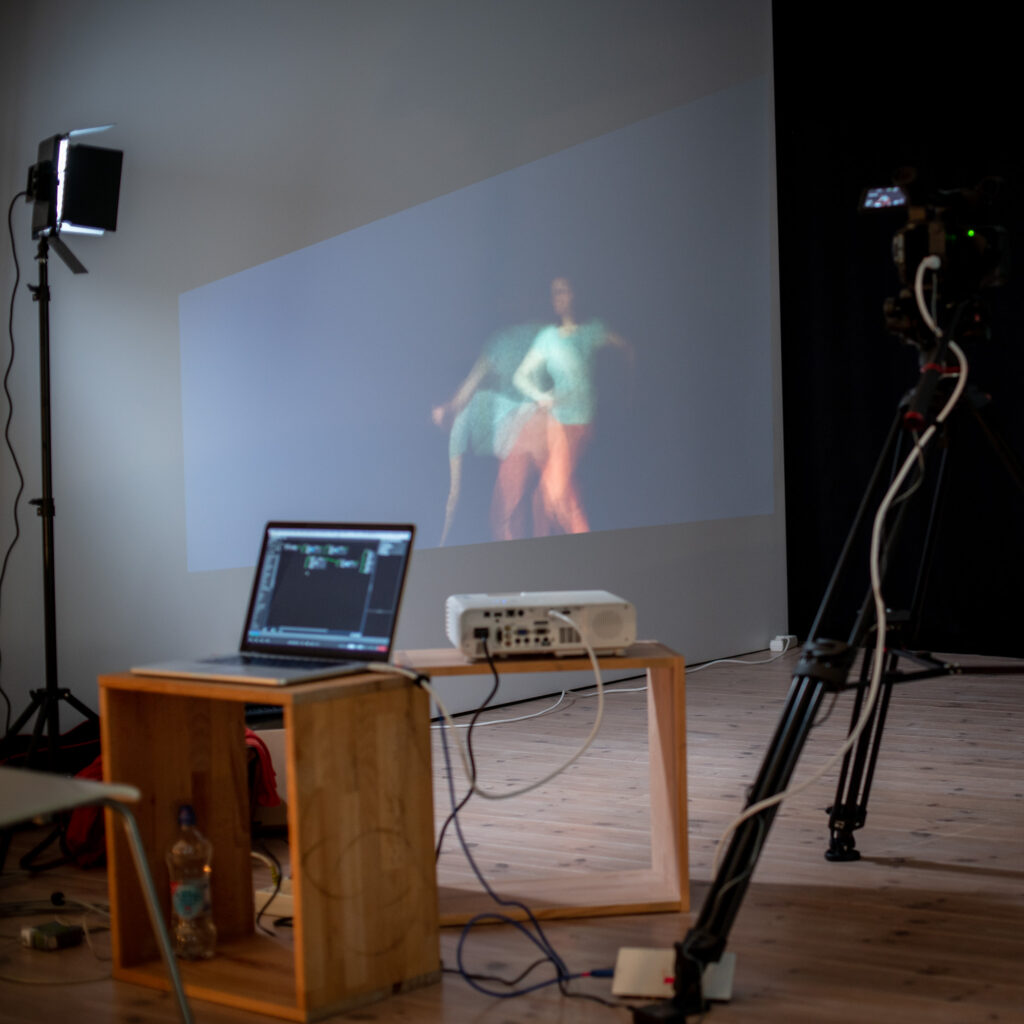
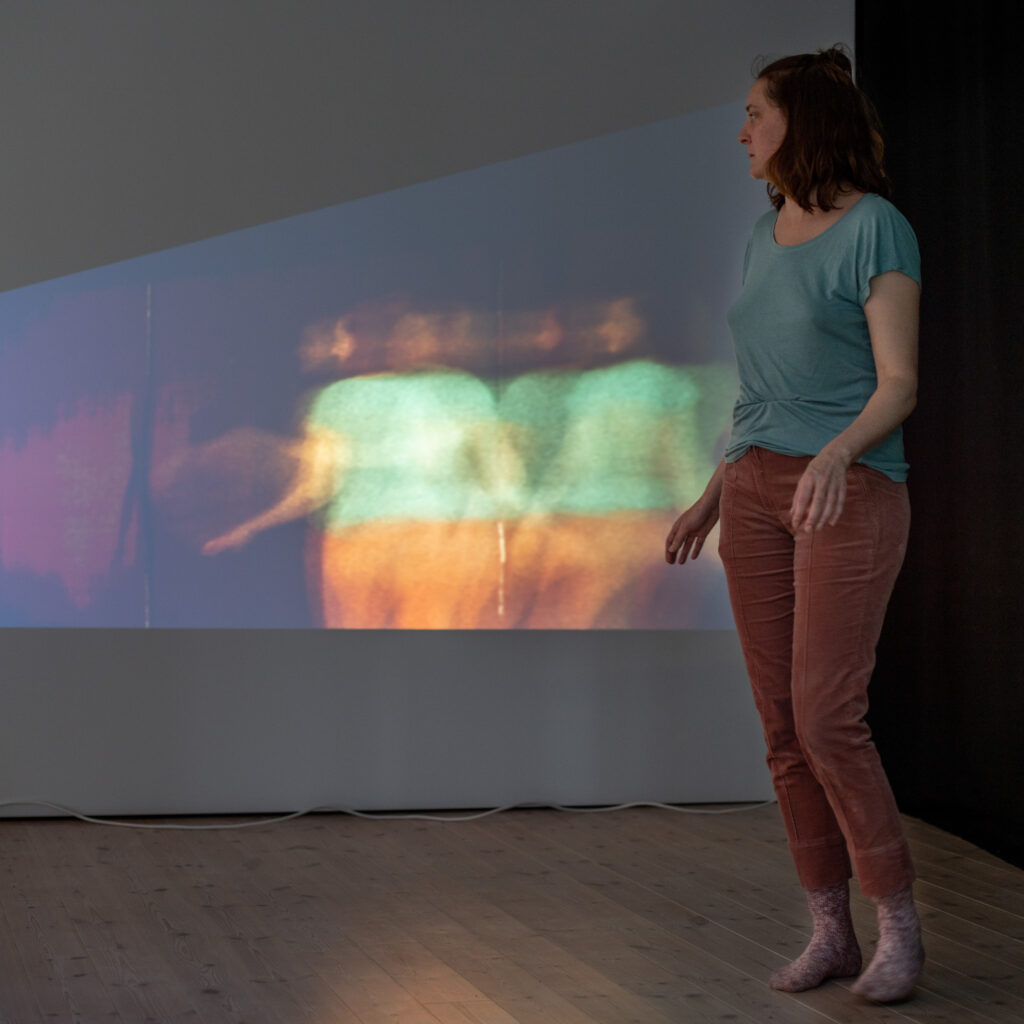
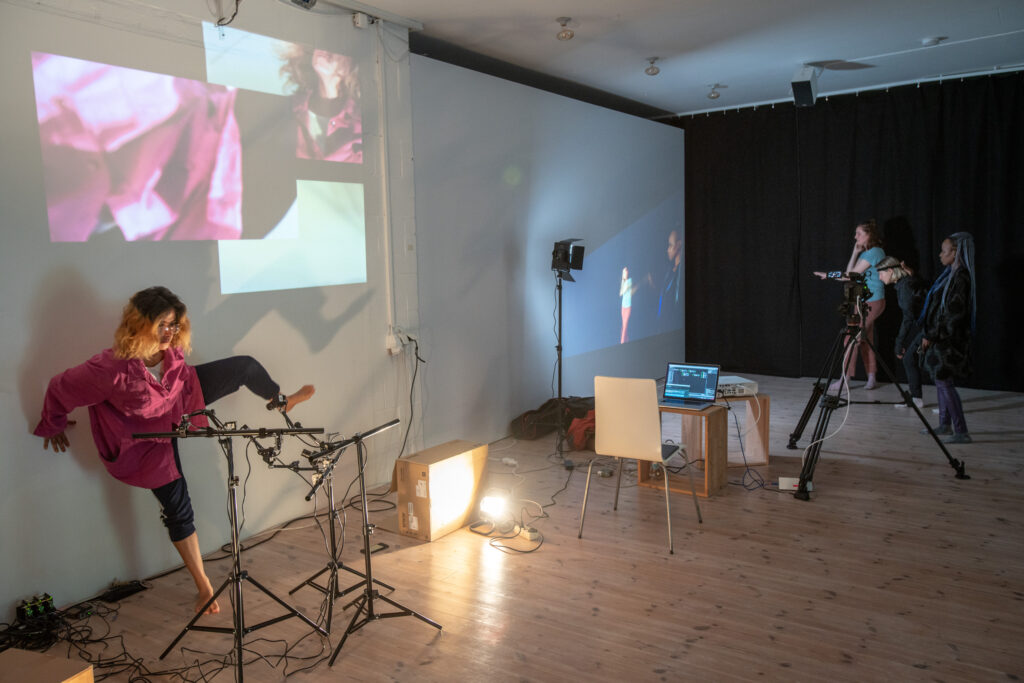
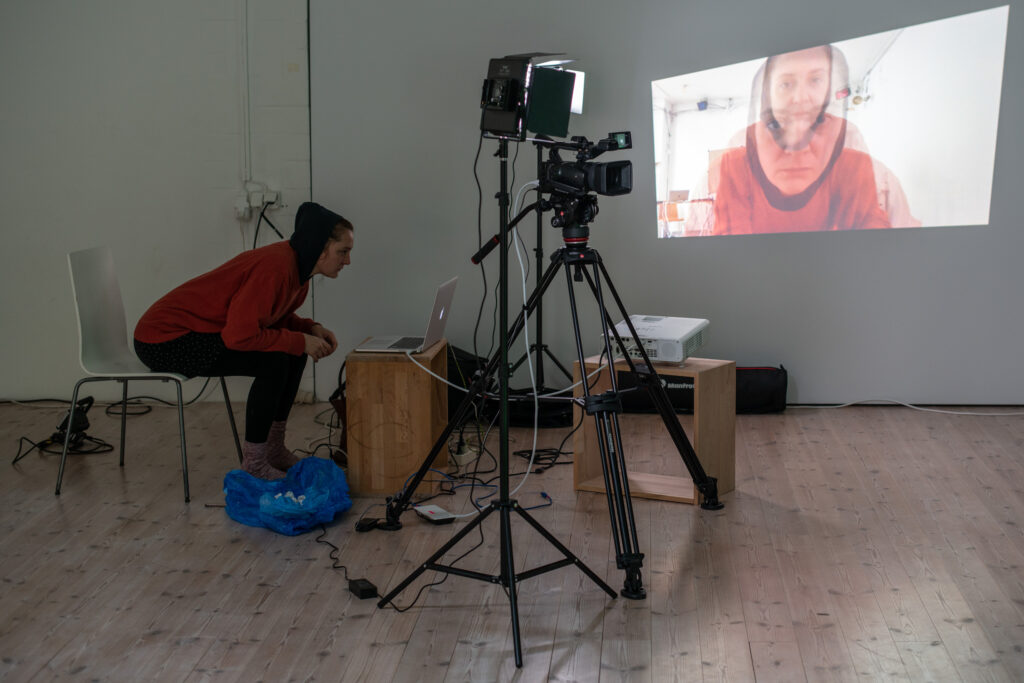
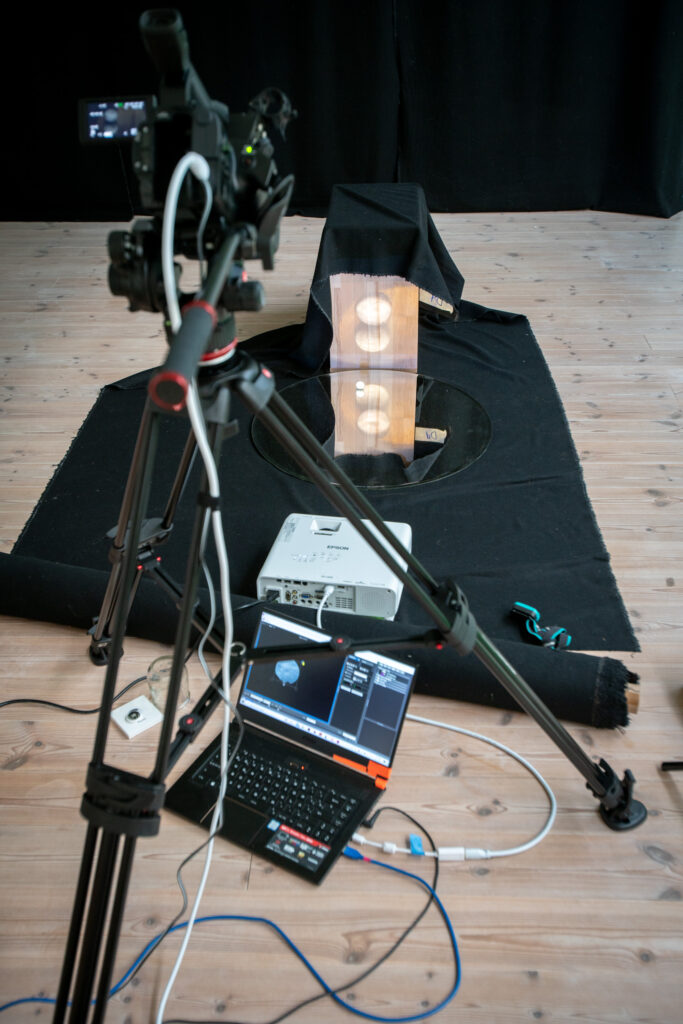

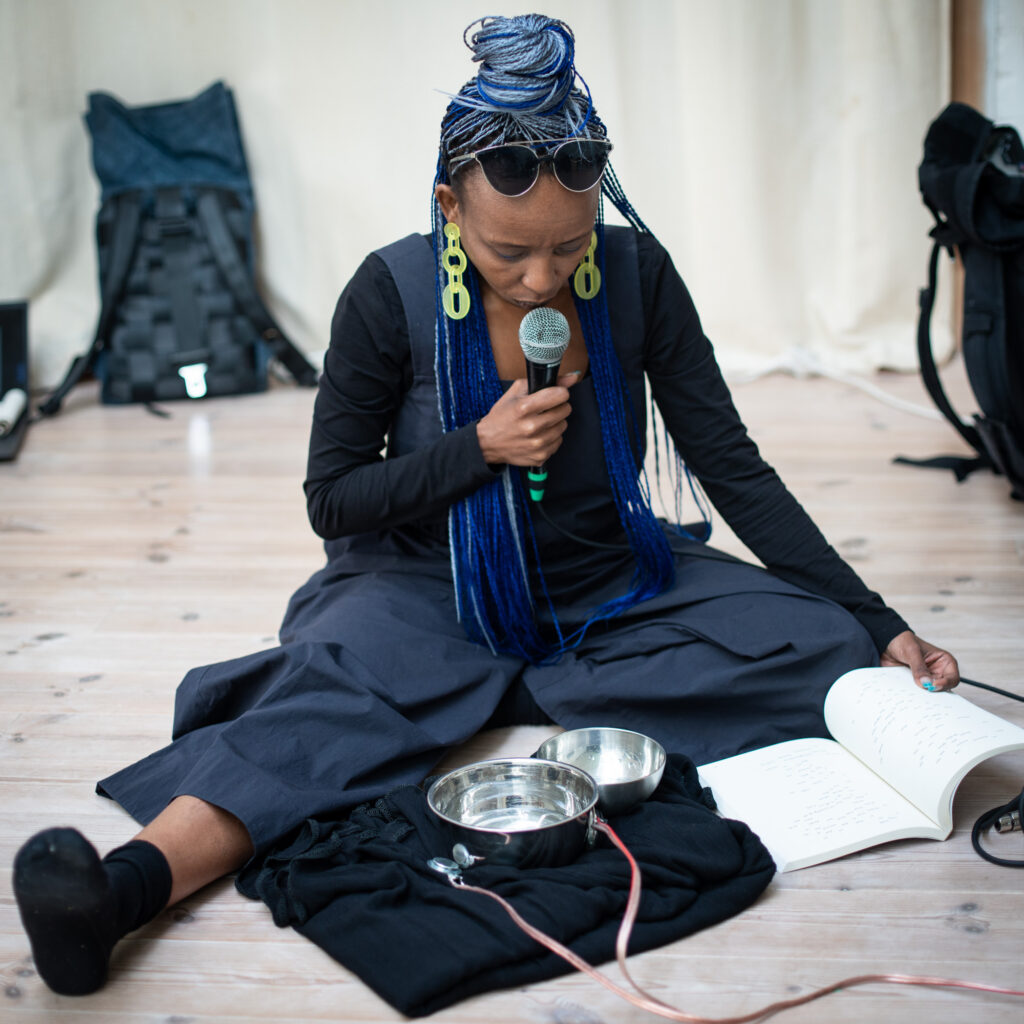
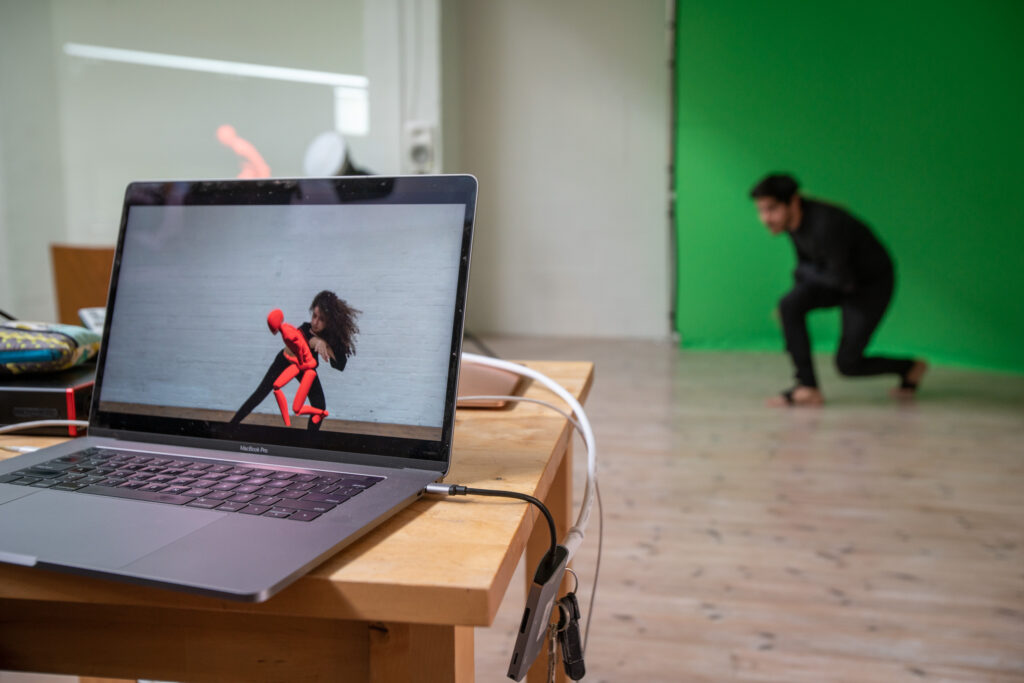
Digital Body Workshop Journal, Days 7 & 8– Big Data
As we did with the word “technology” in the first week, we started the second week by asking “what is data?” This question could be debated ad infinitum, but here I will mention three crucial points: “data is interpretation and representation”, “data is a reduction”, and perhaps most importantly “data has value”. But how does this apply to using data, from a performer or from the world, in a performance?
Our guest speakers Ruth Gibson + Bruno Martelli (https://gibsonmartelli.com), and Bebe Miller (https://bebemillercompany.org) helped us dig in to those points with presentations that touched on technologies ranging from virtual reality to motion capture, though they continuously kept their focus on aesthetics and expression.
With this in mind, we began to navigate “the gear”: this is a sensor, this is the kind of data it measures and represents, this is how we get it into the computer, and this is what we can do with it – practical realities that can often seem at odds with the artistry.
To assimilate and balance the theory, the “how to”, and the desire to express and share our artistic vision, remains the goal of this second week.
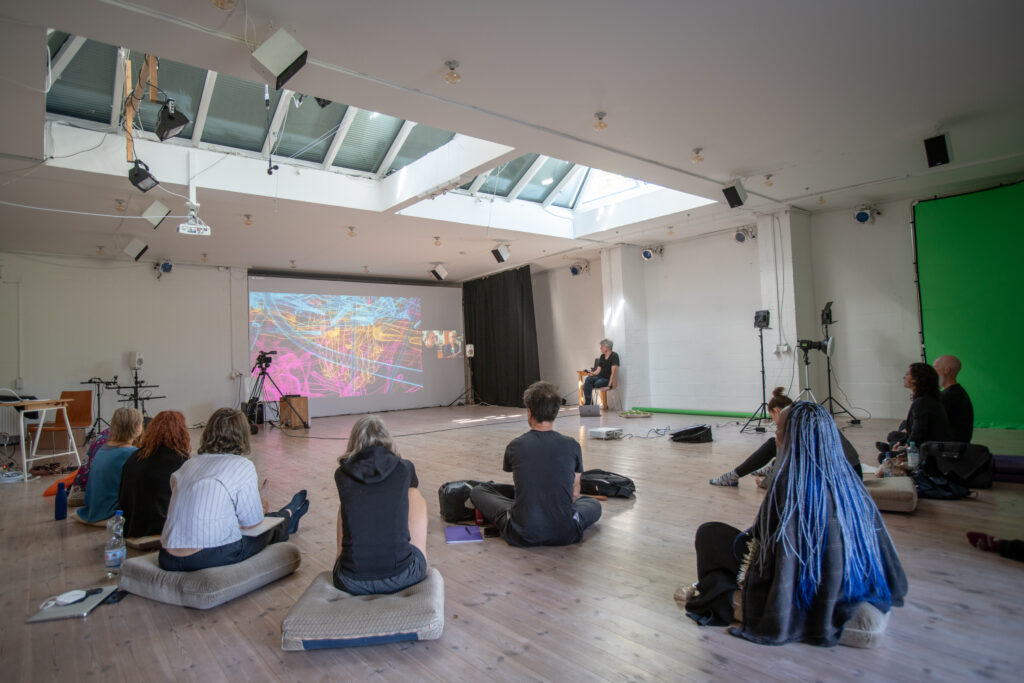
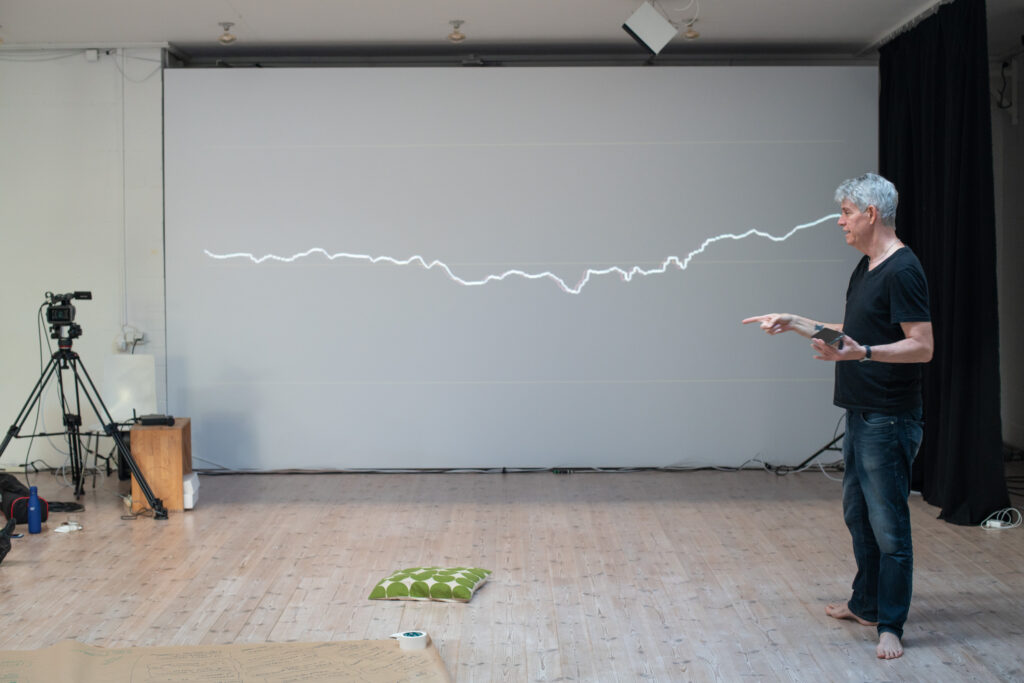
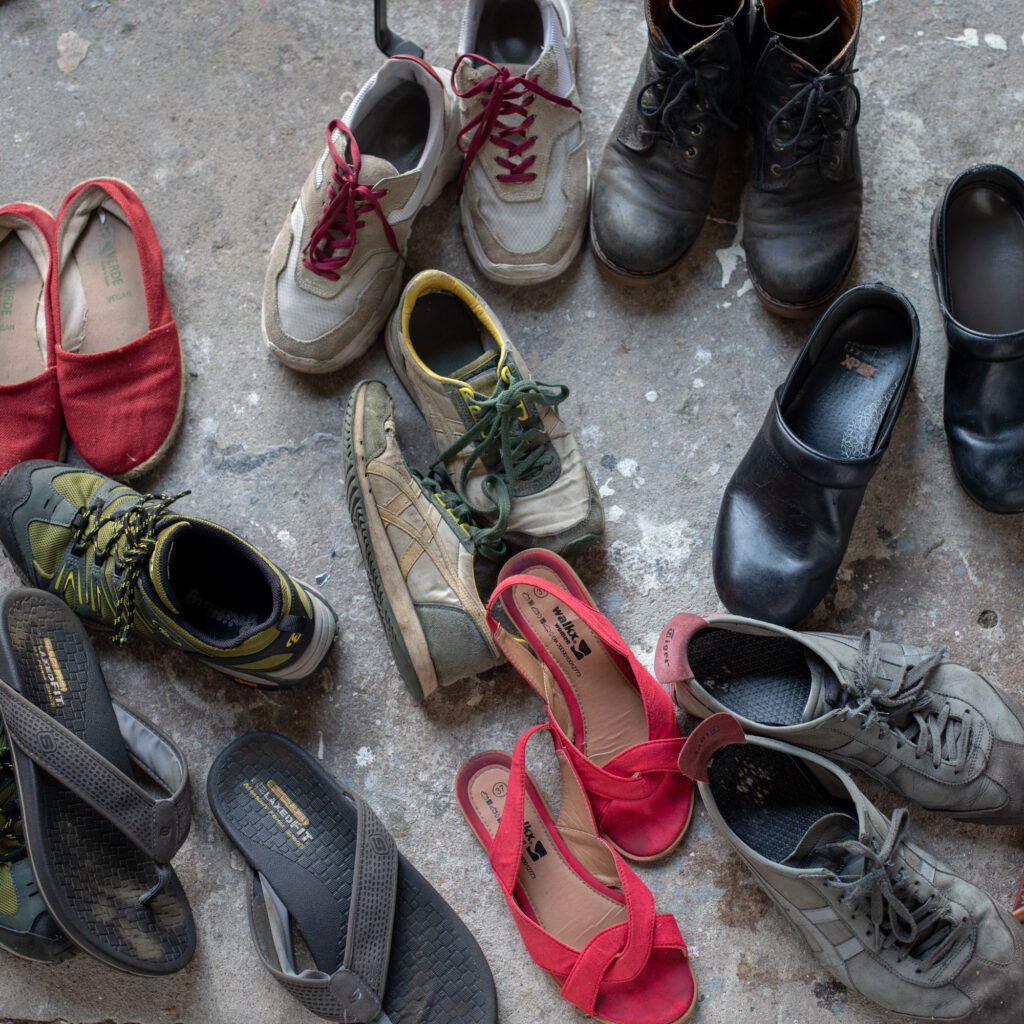
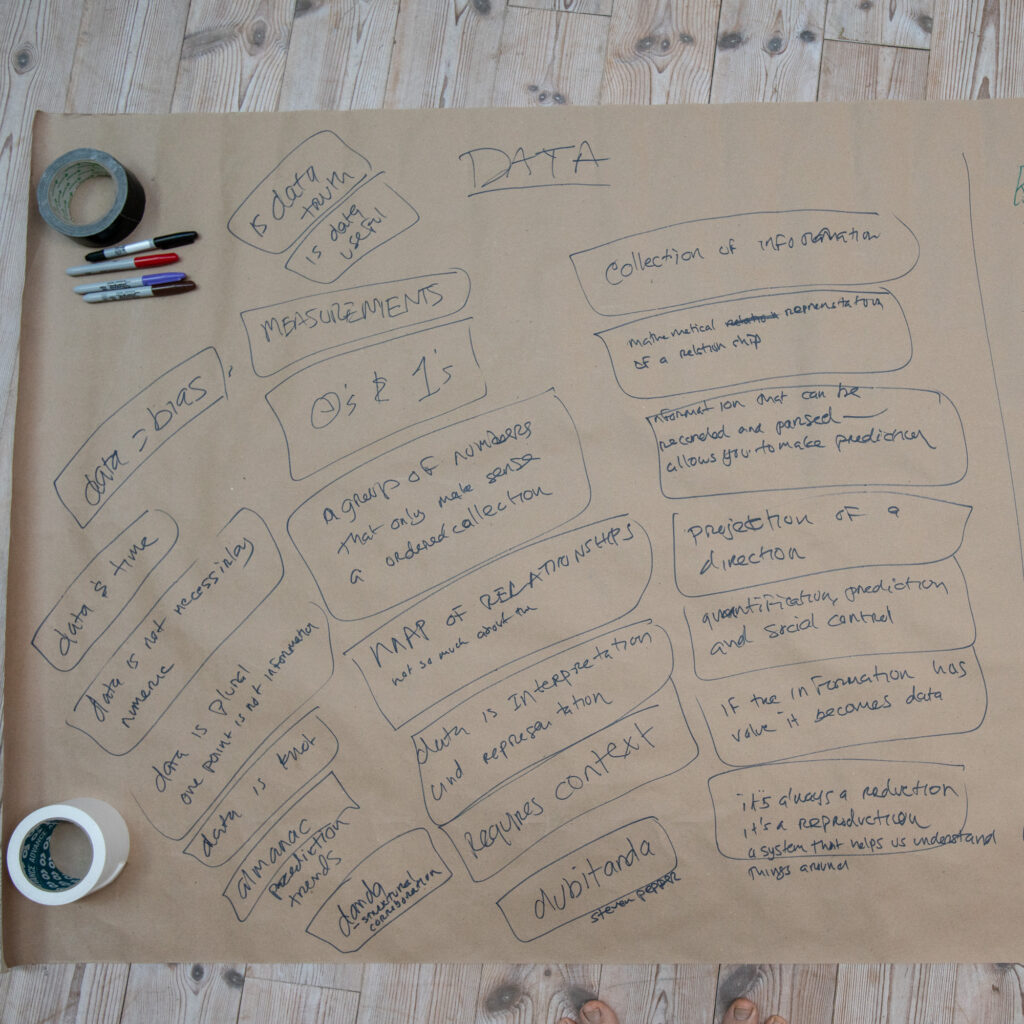
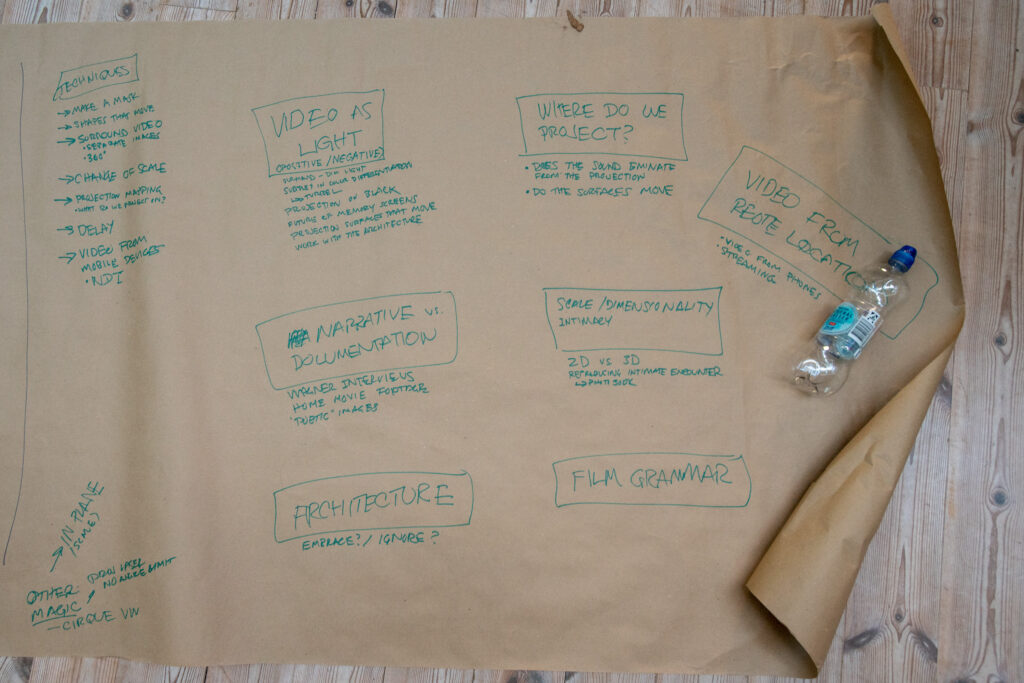
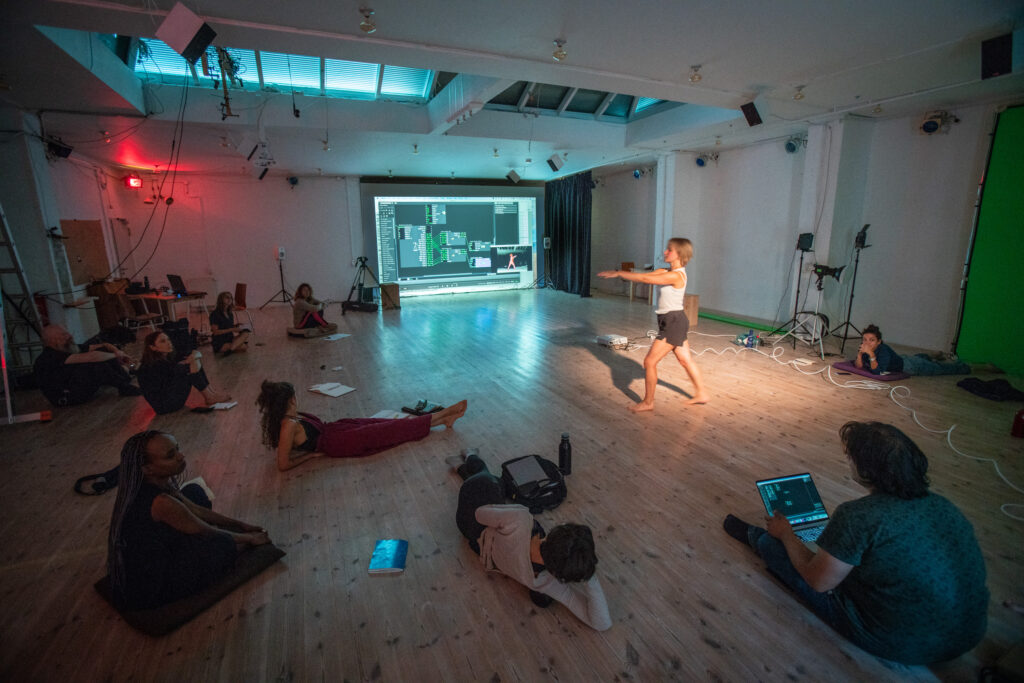
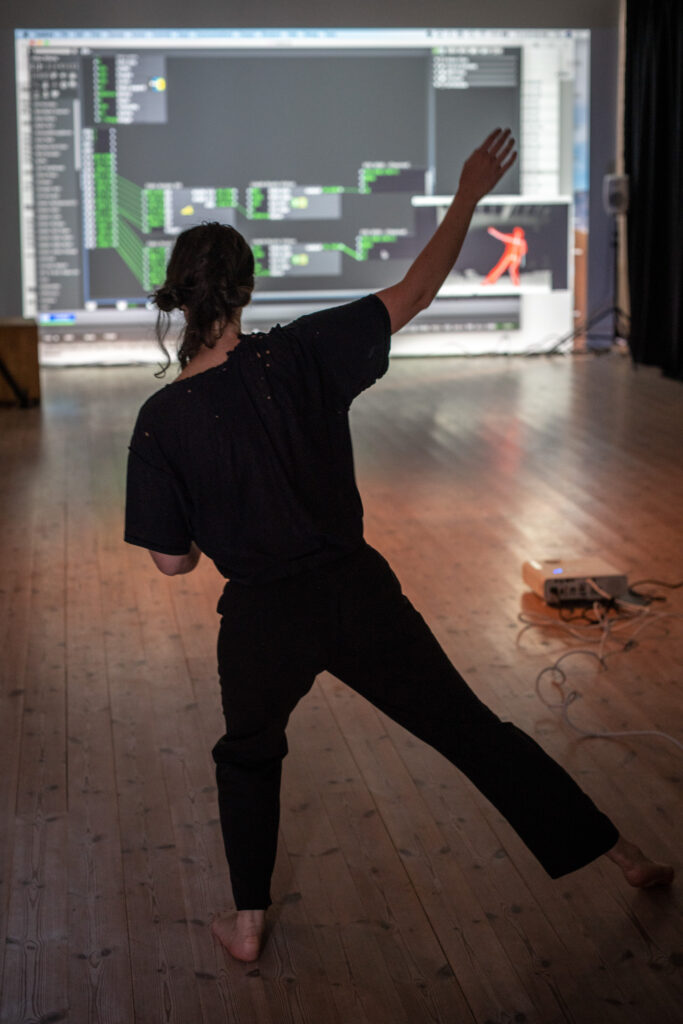
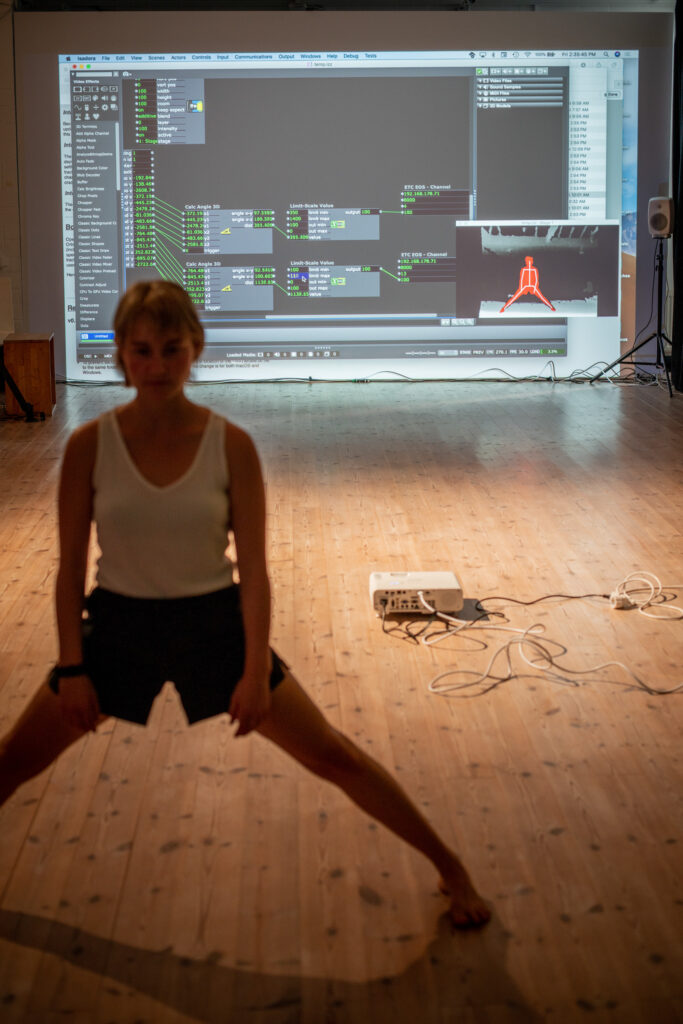
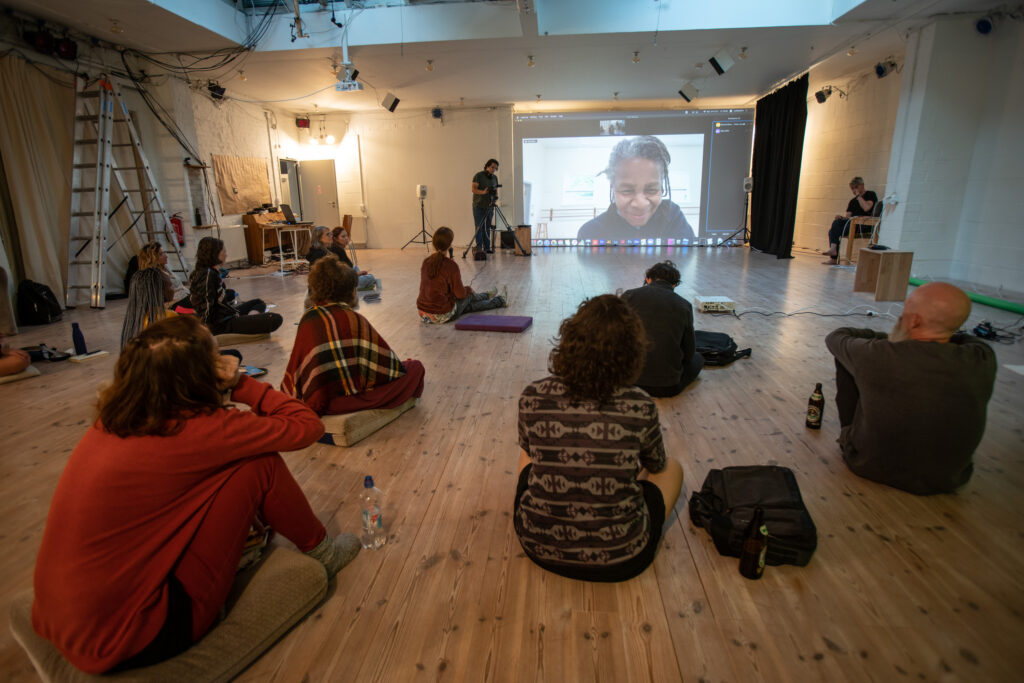
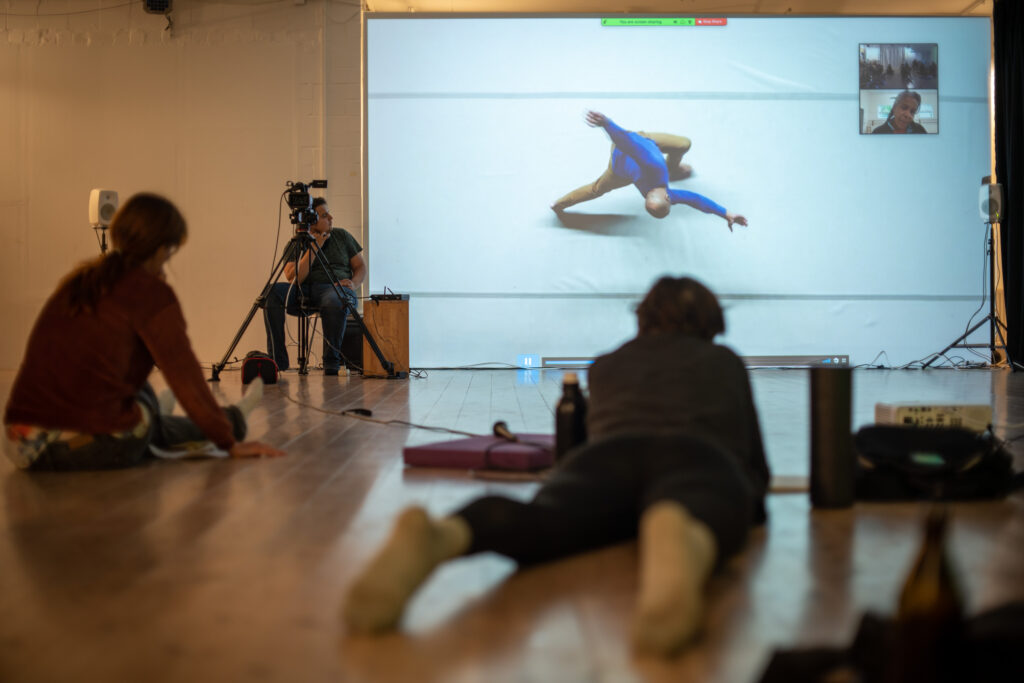
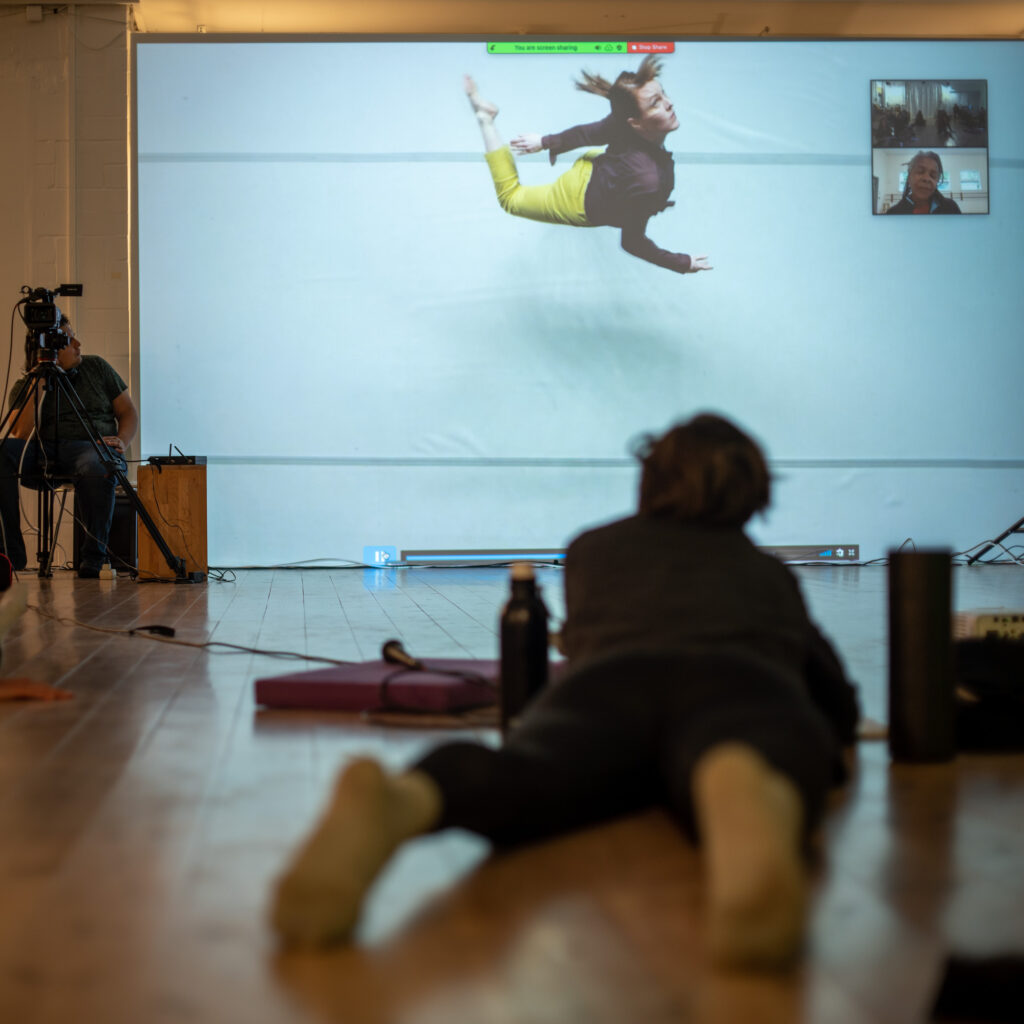
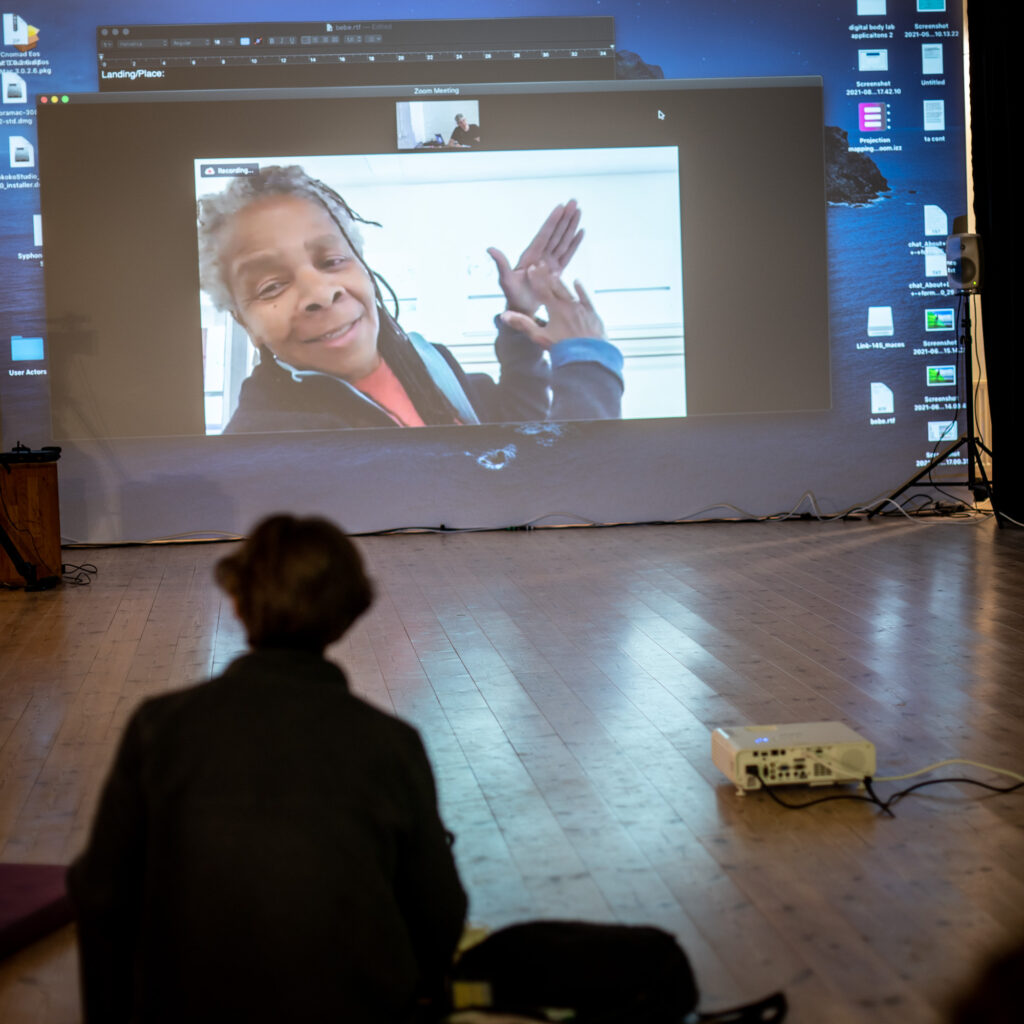
Digital Body No. 1 Journal – Day 9 – Data Invasion
Today’s pictures feature only the participants of the lab, because we spent nearly two hours today vigorously responding to the works presented by our guest speaker Christopher Kondek. (https://doubleluckyproductions.org)
Each of the works dug into the topic of data in a different way – the stock market, our heart beats, lie detectors and more. But none did so more provocatively than “You Are Out There” – where audience members were asked to give their identification cards as a deposit for a set of headphones, not knowing that the faces and names on those personal documents would be projected, scanned, seemingly shredded (it was faked) and otherwise exposed to the entire audience in various ways.
This highly political work led to an intense discussion among us: could an art piece ethically draw attention to matters of data privacy by violating that privacy?
I cannot reproduce the incredibly well articulated points that so many of our intrepid explorers offered in a Facebook post. Suffice to say, thanks to Chris’ presentation and the ensuing discussion, we could no longer pretend that data was just a stream of numbers captured from a performer’s body. Losing control of your data, especially for those who live under authoritarian regimes, is not a game. It is a matter of life and death – a notion that will weigh strong on our minds as we continue thorugh this week.

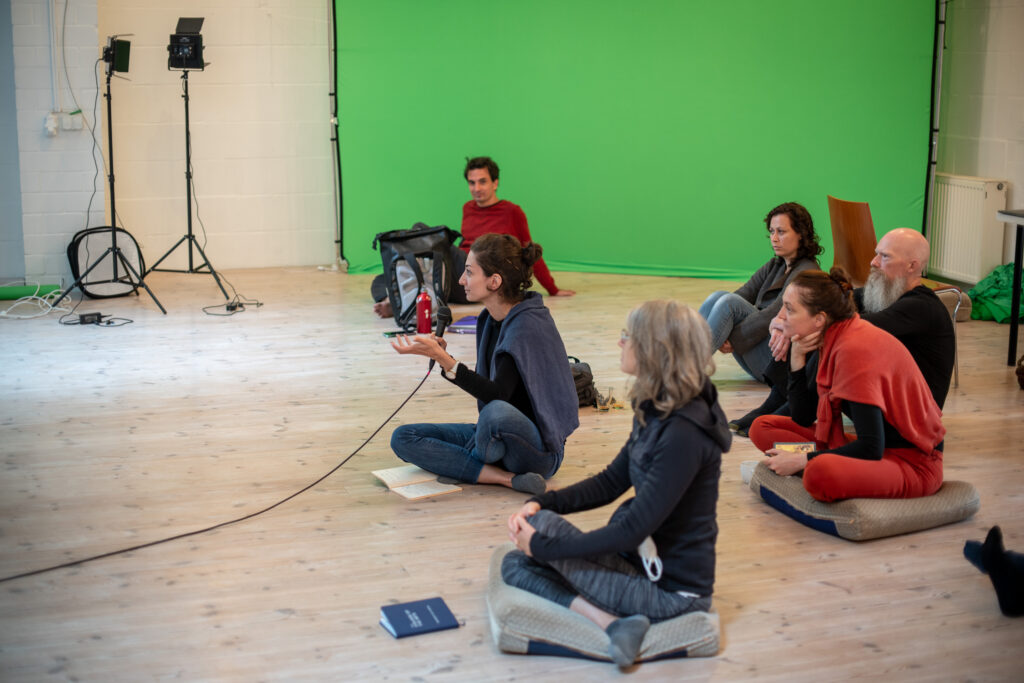
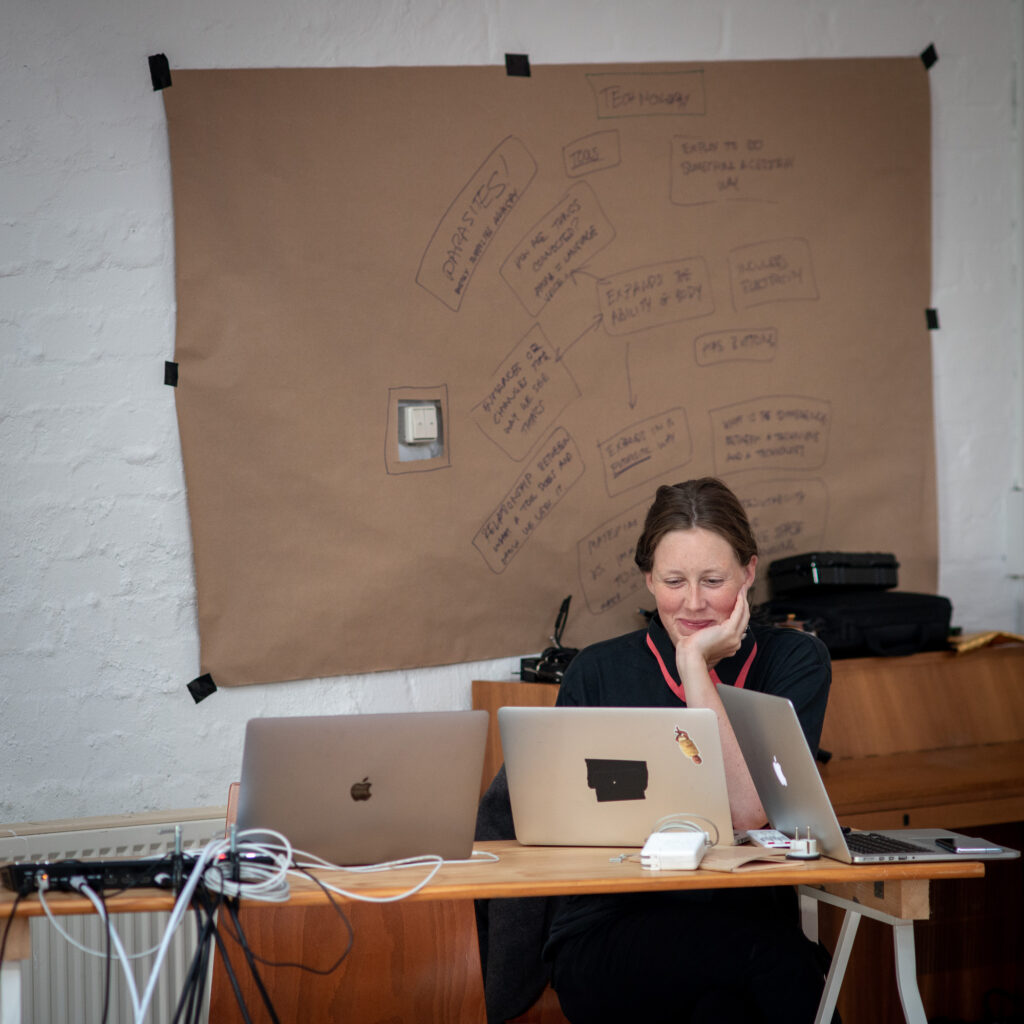
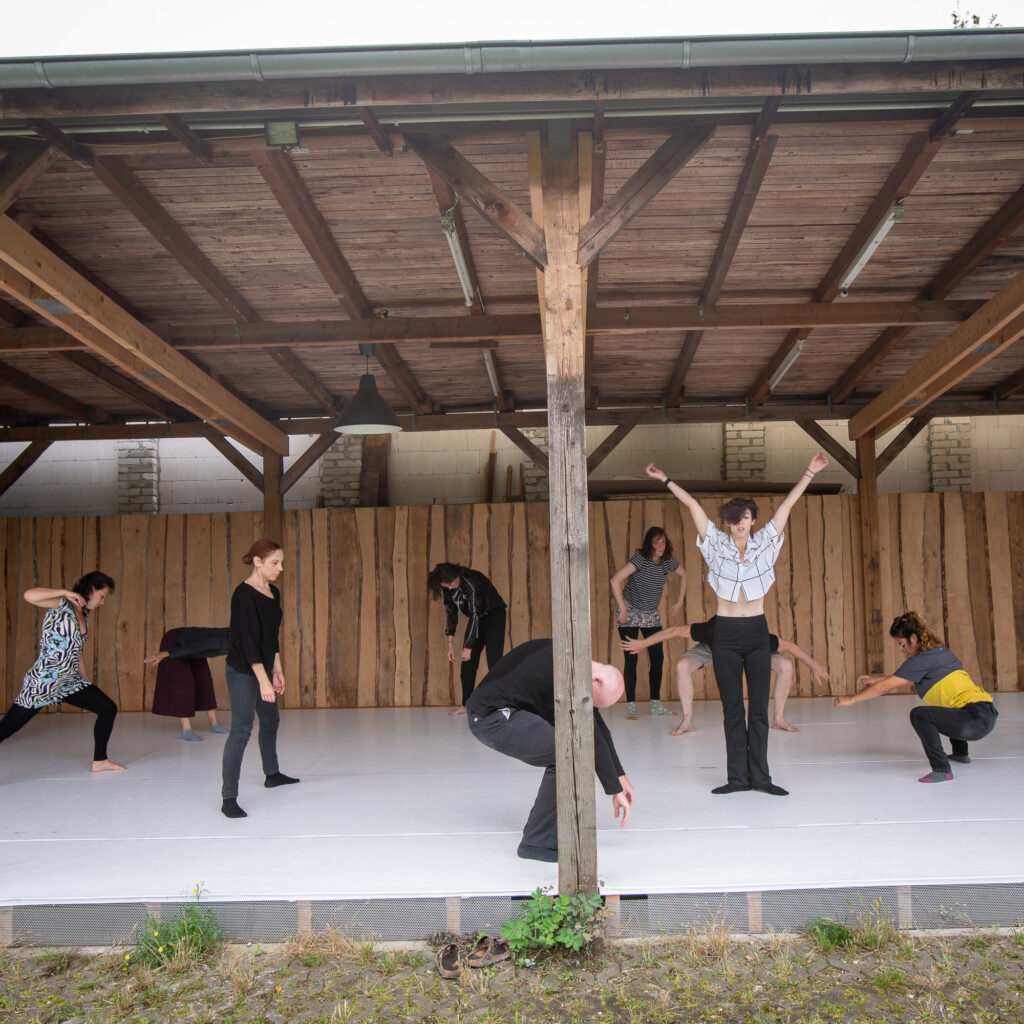
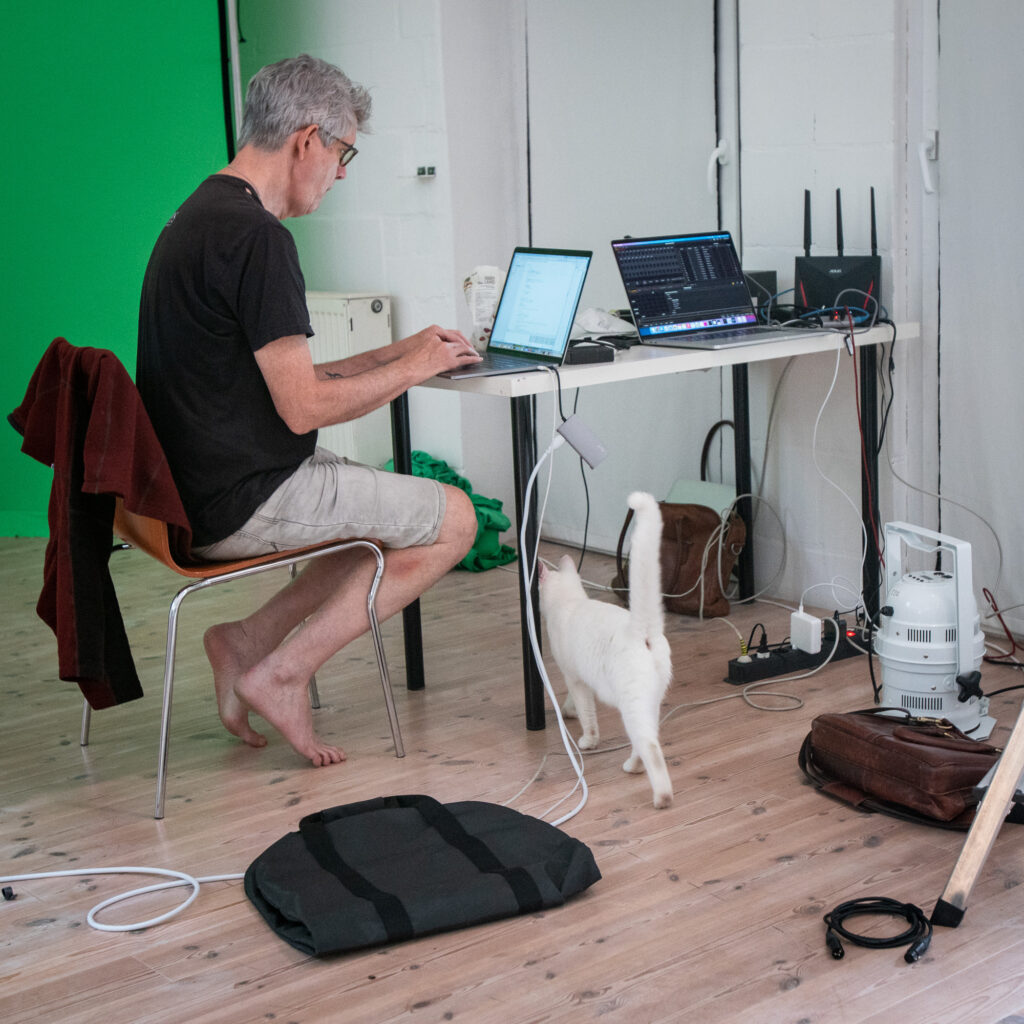
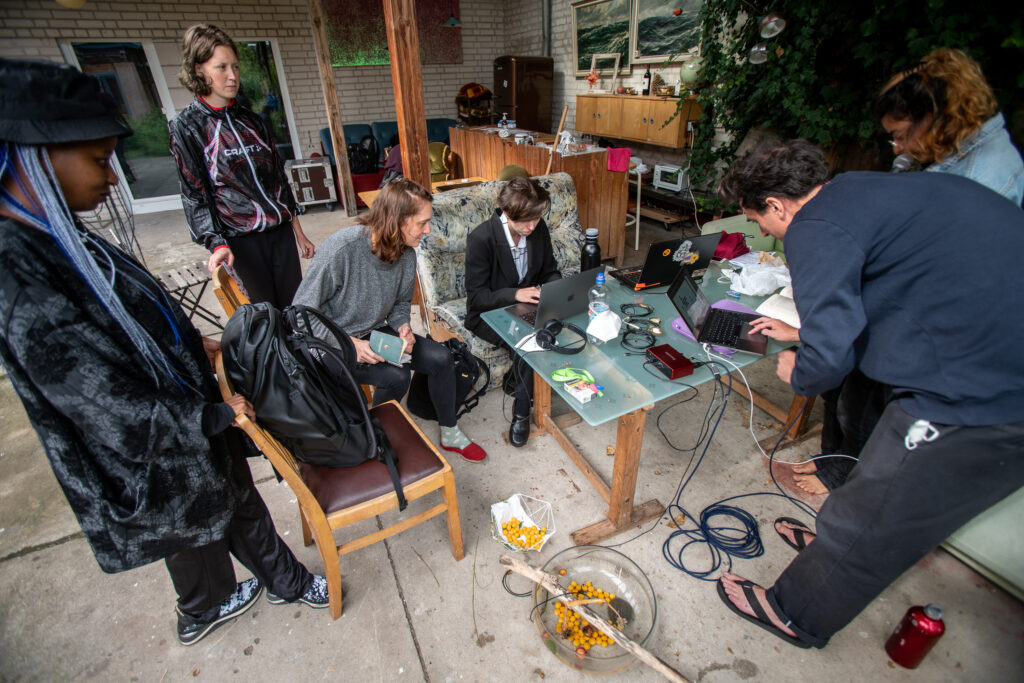
Digital Body No. 1 Journal – Day 10 – A Big Fat Mess of Data
Continuing to consider data, I launched the group into the following process: I would capture four parameters of movement from Marcela Giesche as she danced, and transmit those four continuous parameters to the computer of every participant in the workshop. They were instructed to build patches would use these parameters to manipulate video, sound and/or light.
Simple enough, right? Except for this “catch”: no would know anything in advance about these four streams of data – their source, the way they might of change over time, even if they were coming from Marcela’s body at all.
After an afternoon of preparation, everyone turned on their computers, video projectors, amplifiers and other gear, Marcela started dancing, and the fours streams of numbers became a cacophony of oscillating images, evolving sounds and vibrating light.
It truly was a big, wonderful mess. And yet, very quickly, the participants began to see relationships between the data and the movement, as well as patterns in the way it changed over time. This allowed them to refine how they responded to the data and to organize it into something that held more meaning for them individually.
In other words, we let noise evolve into pattern by letting our brains see _into_ the data… putting us in an excellent place to create the final short studies we would present on the last day.
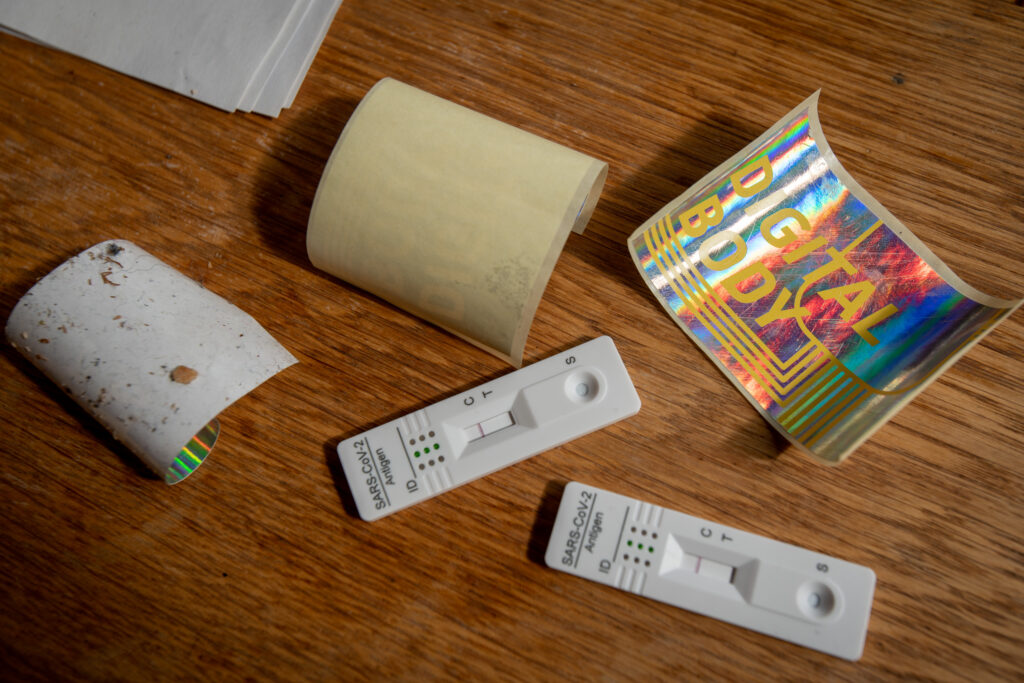
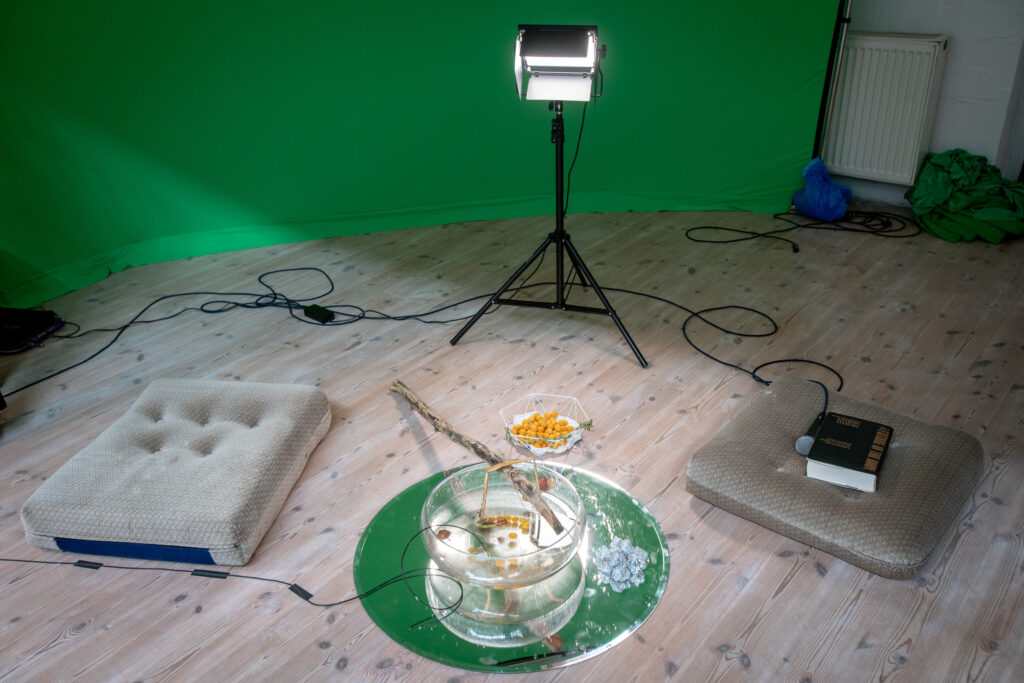

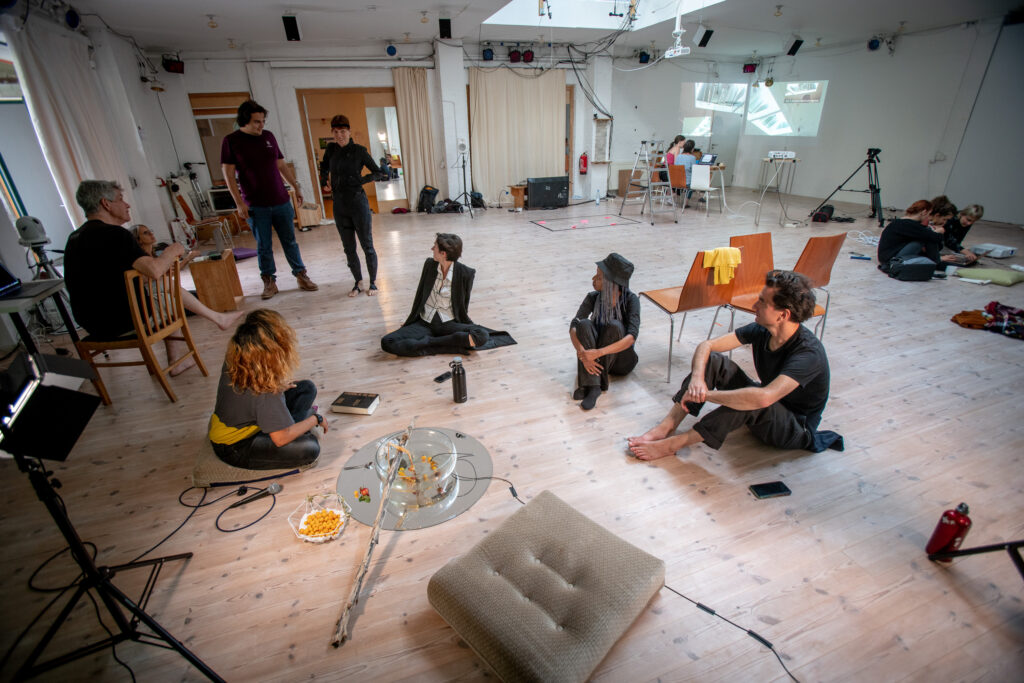
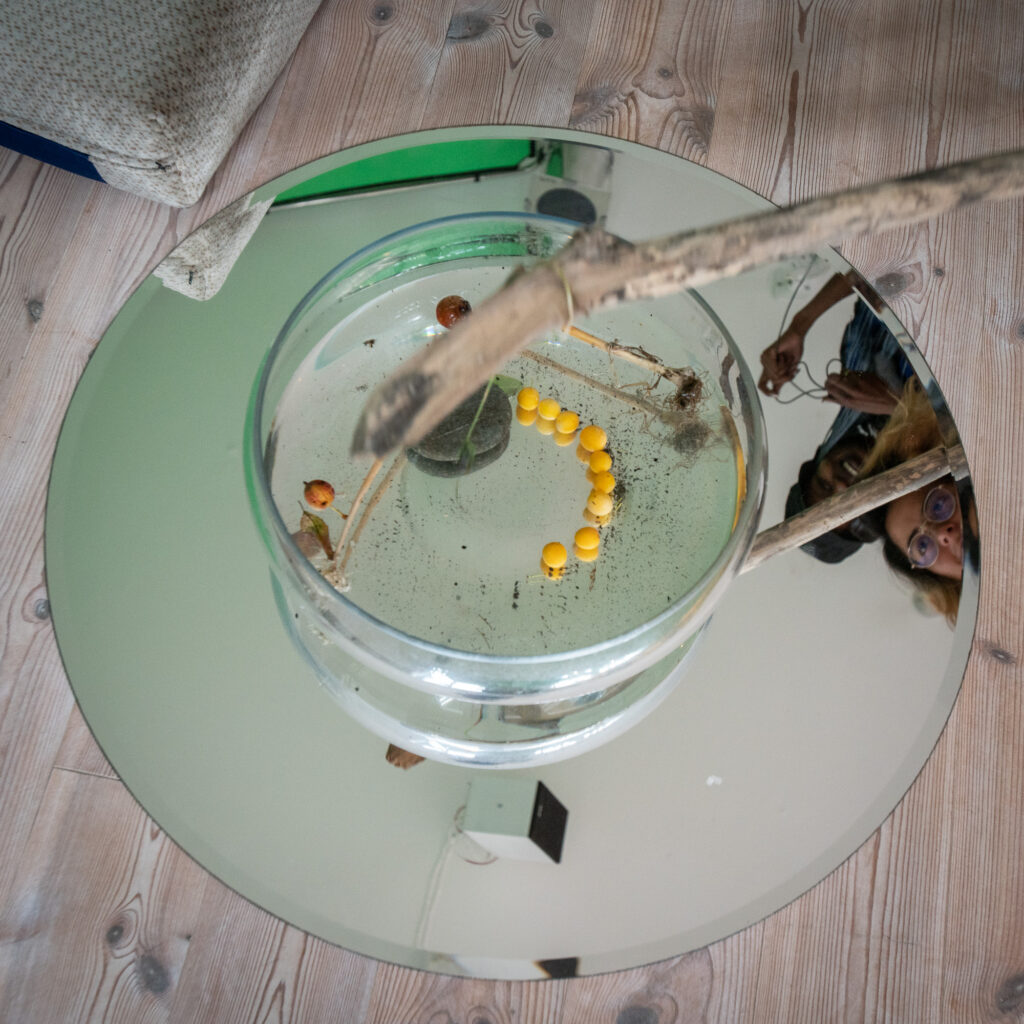
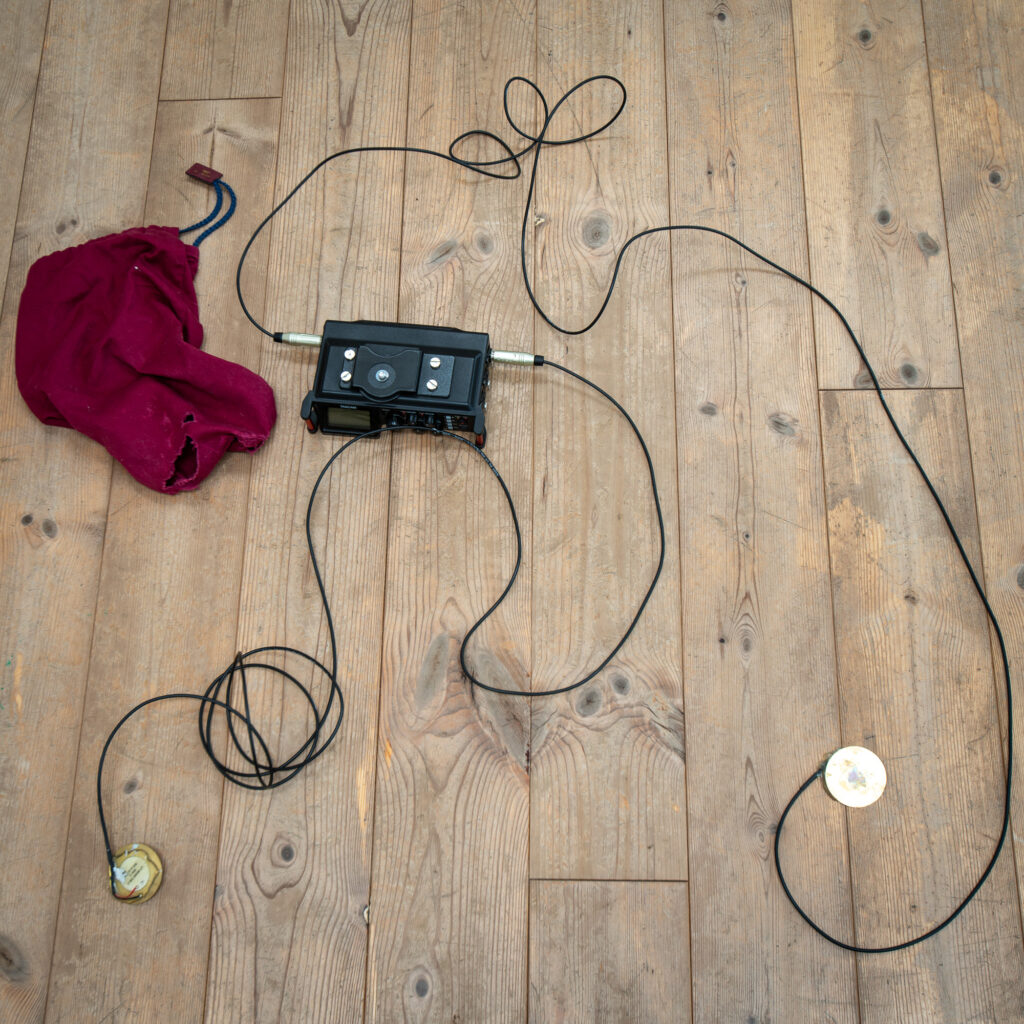
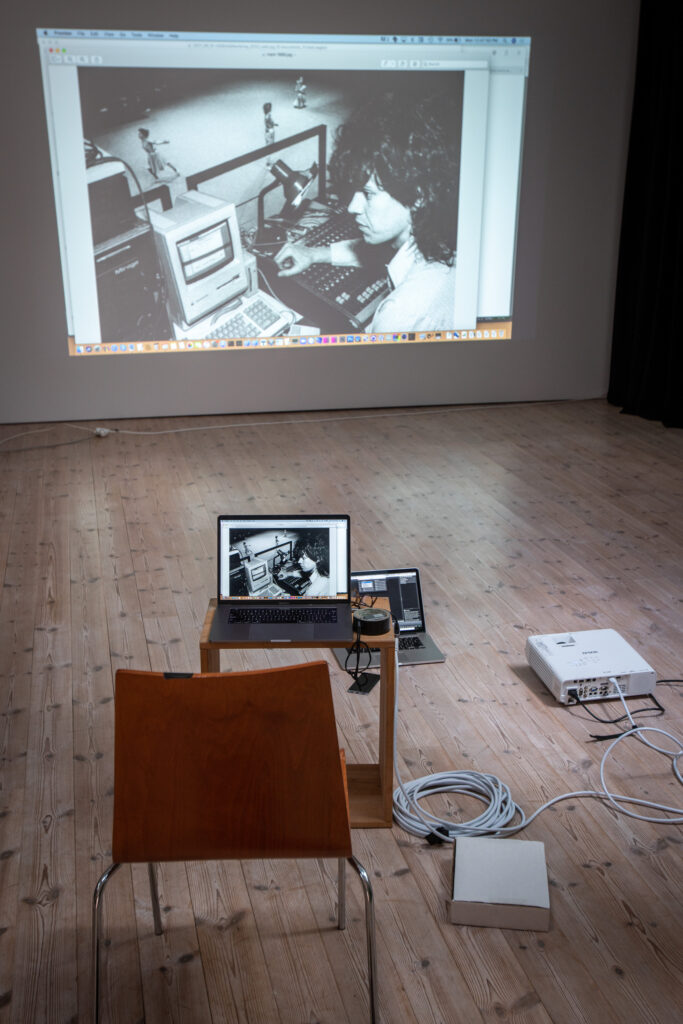
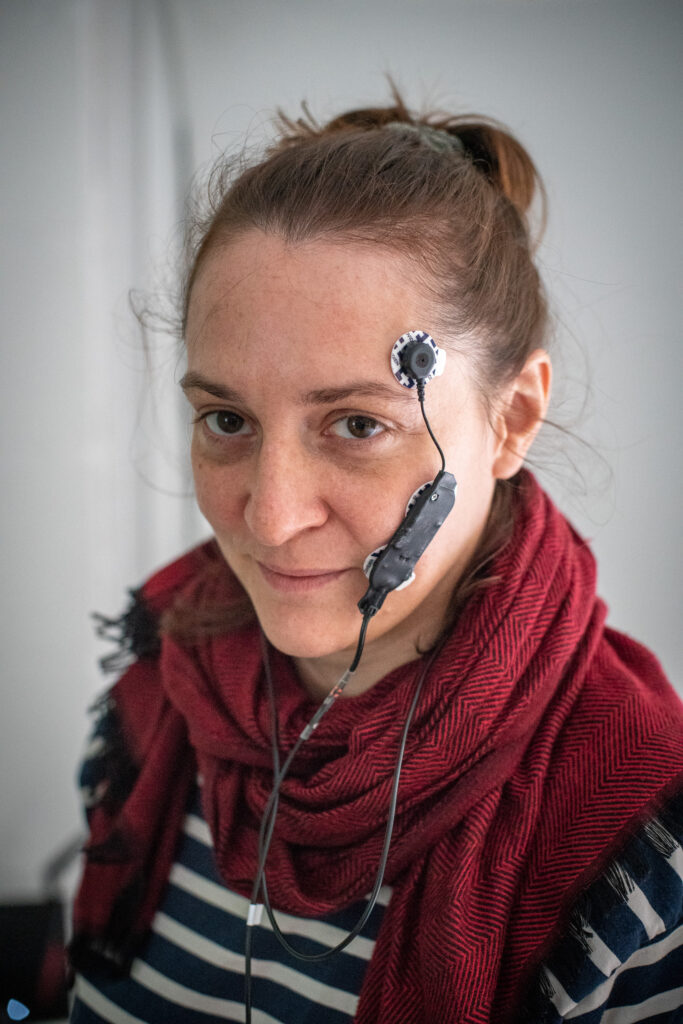
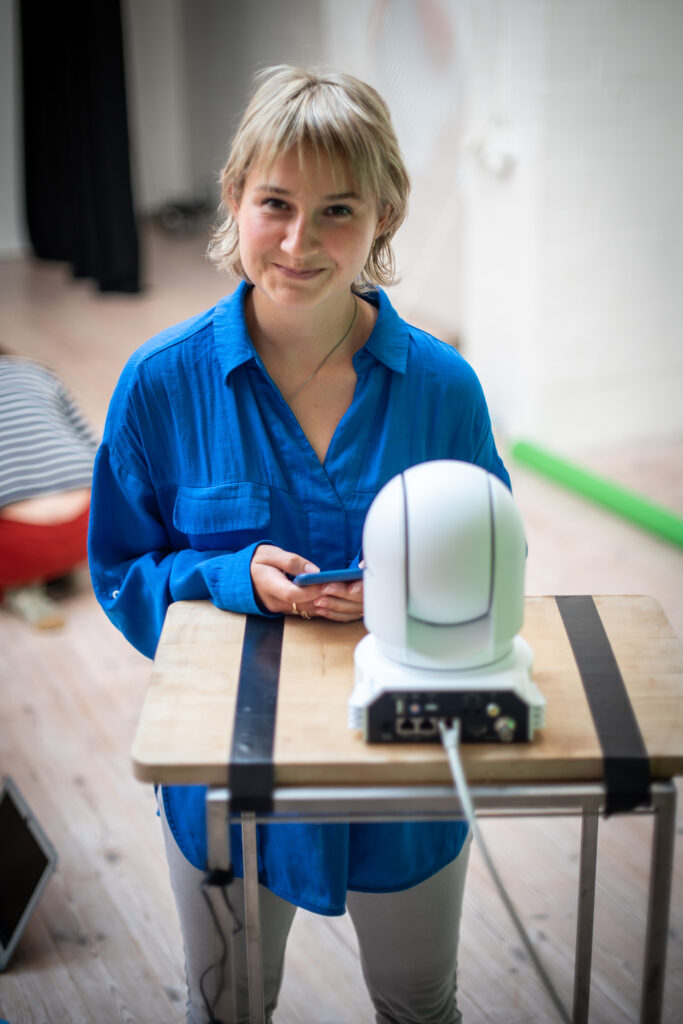
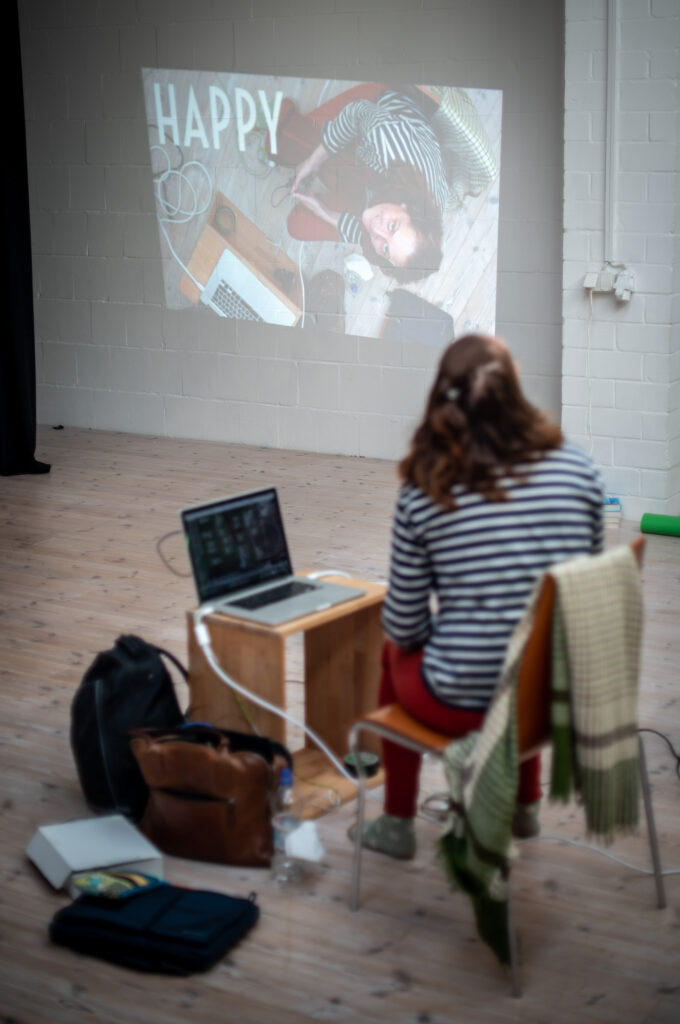
Digital Body No. 1 Journal – Days 11+12 – The Proof Is In the Pudding
So, after all the inspiration from our guest speakers, after all the experiments and passionate discussions, the lunches and dinners together, it was time to individually, or in small groups, make something to show each other.
On the very first day, I asked the participants to repeat two sentences after me: “I will accomplish nothing during the next two weeks” and “I will embrace failure.” I did this as a way of reminding them that the process was the product, and that when we got to the point of making these short studies, there needn’t be any pressure to deliver anything at all.
Still, the notion of a “premiere” runs deep in performing artists. While everyone retained the spirit of their earlier promise, they also worked diligently to assimilate what we had taken in over the past 10 days as they created these short studies. In one, the computer attempted to sense happiness (a smile) or sadness (a frown) in the performer, but became beautifully confused during the in-between state; in another, a collective of four women formed to explore their personal stories of loss and trauma with a sound collage manipulated by their own bodies; in yet another, a connection between the the slow rotation of the dancer was echoed by a pan-tilt-zoom camera that, through its own rotation, generated gently evolving patterns of video feedback.
I felt lucky to experience these highly personal expressions of what all we had done, discussed, and debated. But the biggest “D” word I felt upon viewing these creations was “delight”. Together we had come not to an end, but to place where we could see an open door to bigger and bolder media performances and artworks to come. I am excited to see what lies beyond that portal for our intrepid explorers.
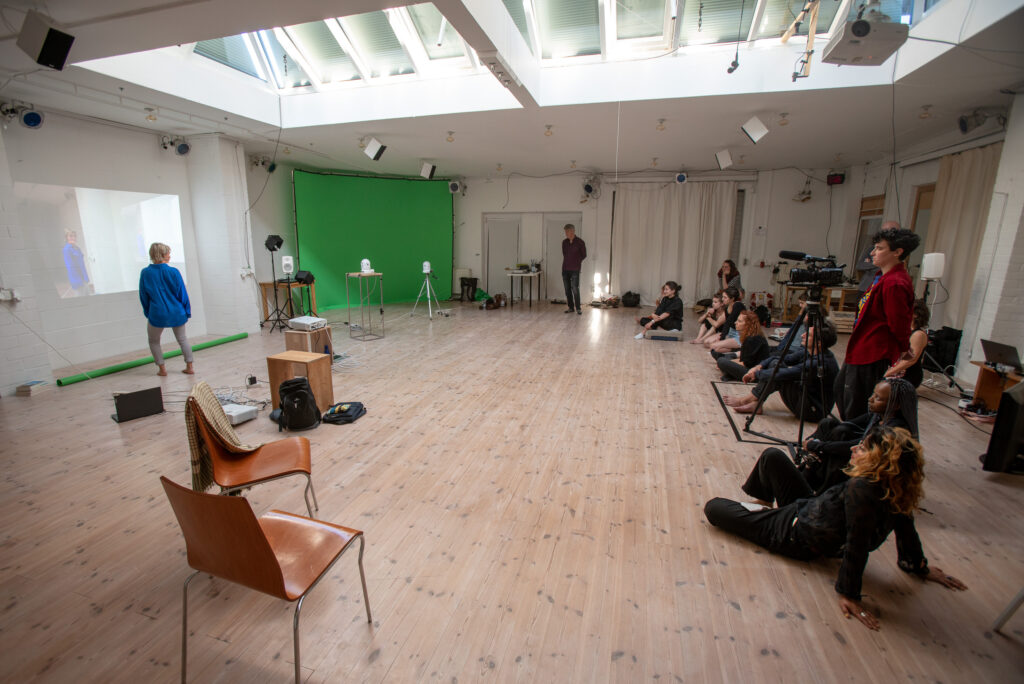
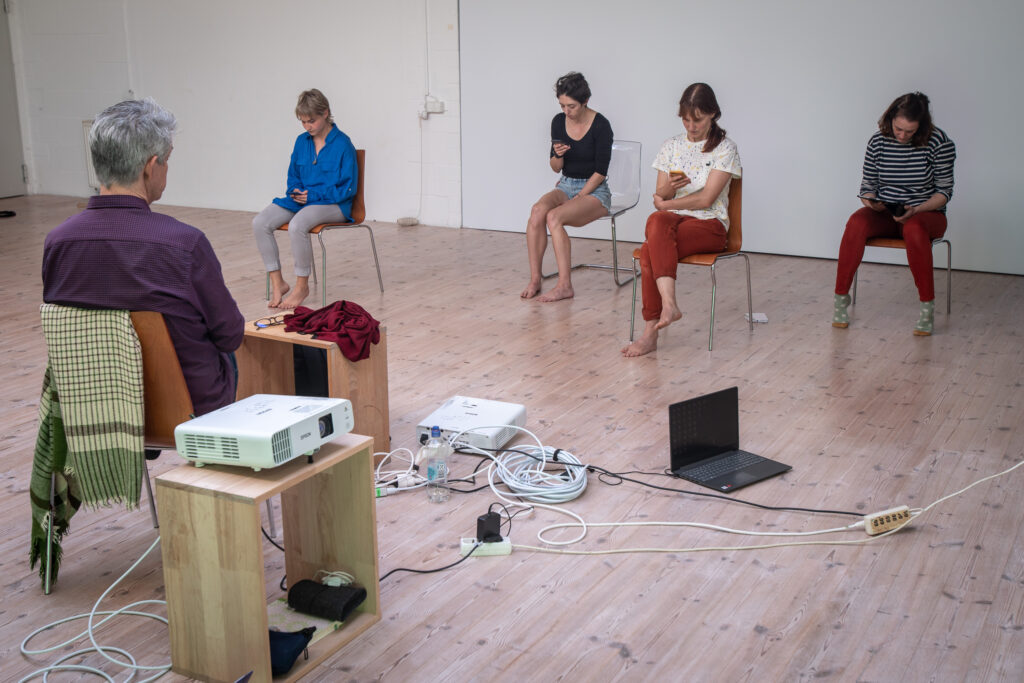

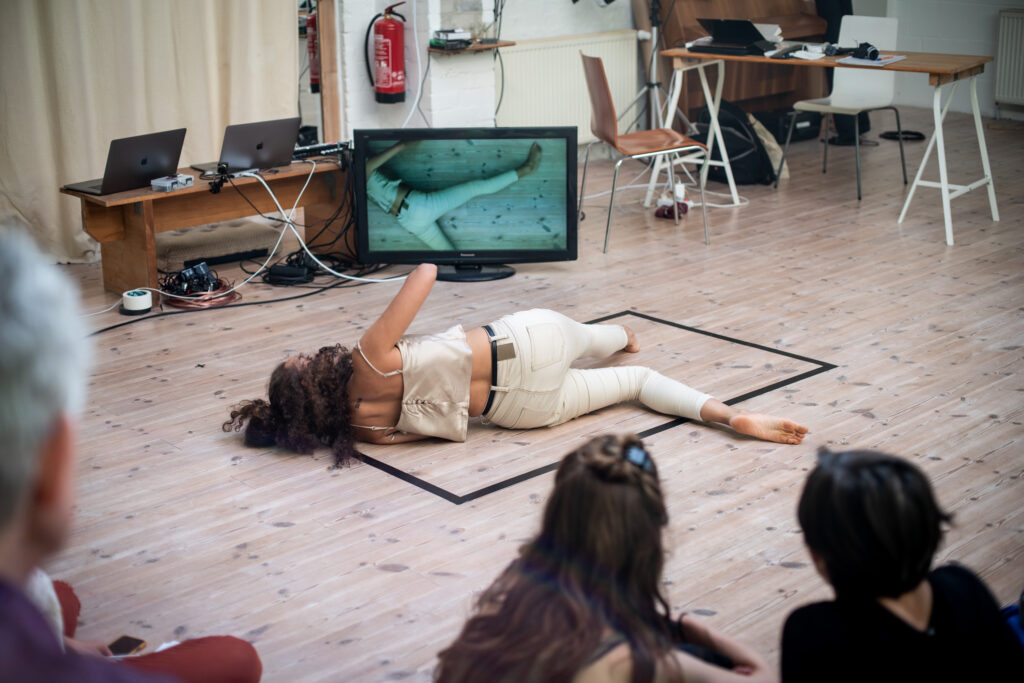
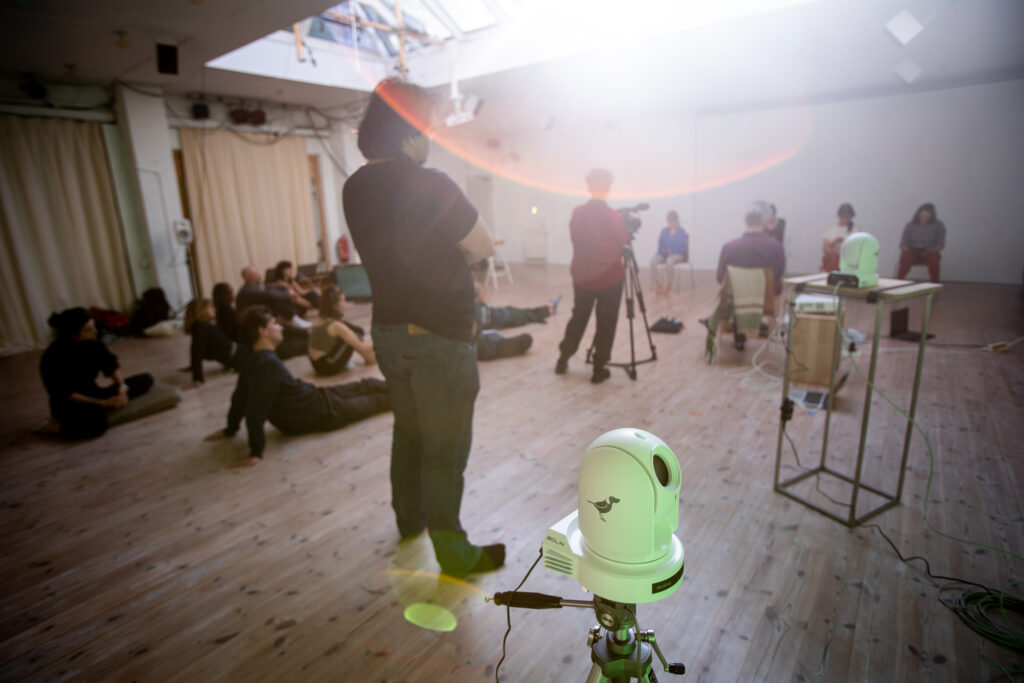
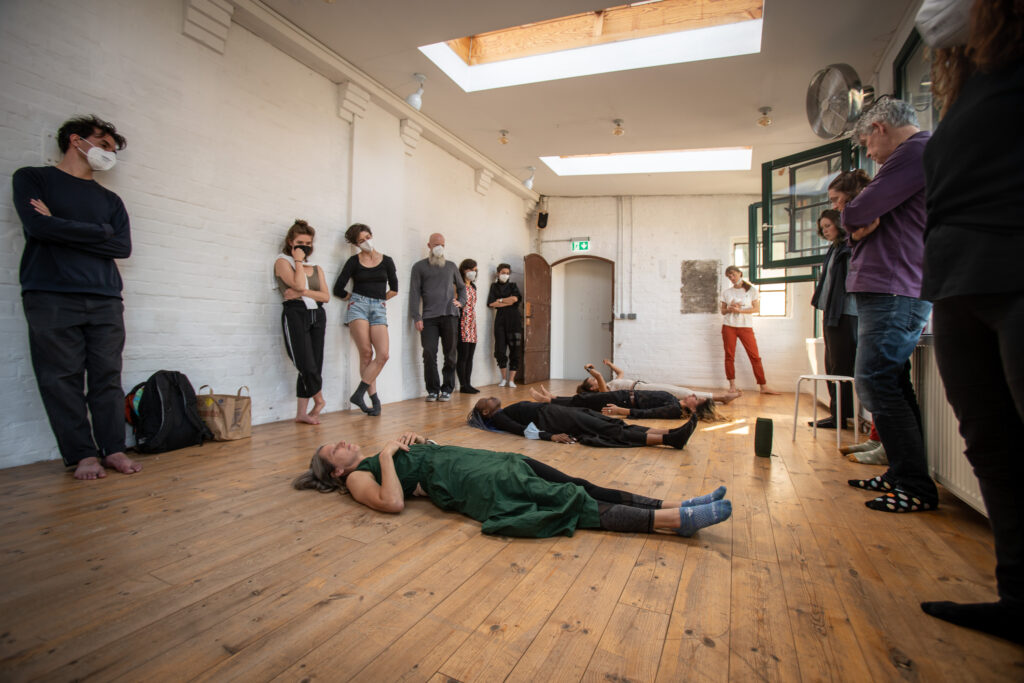
Text by Mark Coniglio
Photos by Benjamin Krieg
